1lumen selects and reviews products personally. We may earn affiliate commissions through our links, which help support our testing.
NEXTORCH E52C review
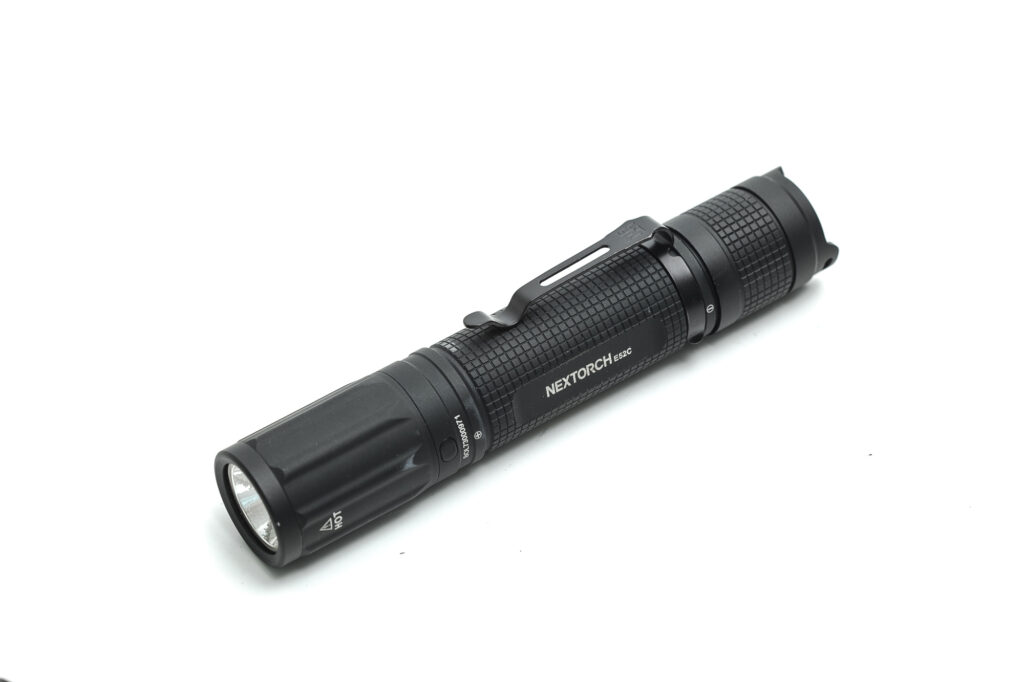
NEXTORCH E52C specifications
| Brand/model | NEXTORCH E52C |
|---|---|
| Flashlight category | EDC / General tasks |
| LED | CREE XHP50B |
| Max. output | 3,000 Lumens |
| Max. beam distance | 210 meters |
| Max. beam intensity | 11,025 cd |
| Battery config. | 1*21700 |
| Onboard charging | USB-C |
| Modes | 3 |
| Blinkies | Strobe |
| Waterproof | IPX8 |
| Review date | September 2023 |
Review intro:
NEXTORCH is known for their tactically oriented flashlights and law enforcement gear. They supply many products to over 100 countries and agencies around the world. Their “TA” line is the most tactical in the lineup, but he “E” line is a smaller kind of flashlight, and almost feels like it would fit the EDC flashlight category. But that’s not really correct, because it’s not marketed as being an EDC. It’s sold as being a High Power Rechargeable Flashlight. The NEXTORCH E52C is an upgrade from the NEXTORCH E51C we also reviewed, which was again a slight upgrade from the E51. The E52C is advertised at 3,000 lumens, which is about double that of the E51C. They also changed battery type, and moved from 18650 to a 21700 battery. It still has USB-C charging, and with the included battery, you are ready to go.
Package quality.
The E52C is shipped in a white cardstock box with the NEXTORCH logo and photos of the light in front. The back has specifications and some information on charging. The light did ship with a battery, and it came preinstalled in the light, and measured about 3.63V, and with a battery isolator pad stopping parasitic draw while en route. All of the other items came in a plastic zipper bag. All in all, everything was well packaged and, in the box, everything included is:
- NEXTORCH E52C
- 21700 Battery 4800mAh (preinstalled)
- Pocket clip (preinstalled)
- USB-C cable
- User Manual
- Spare O-Rings
- Lanyard
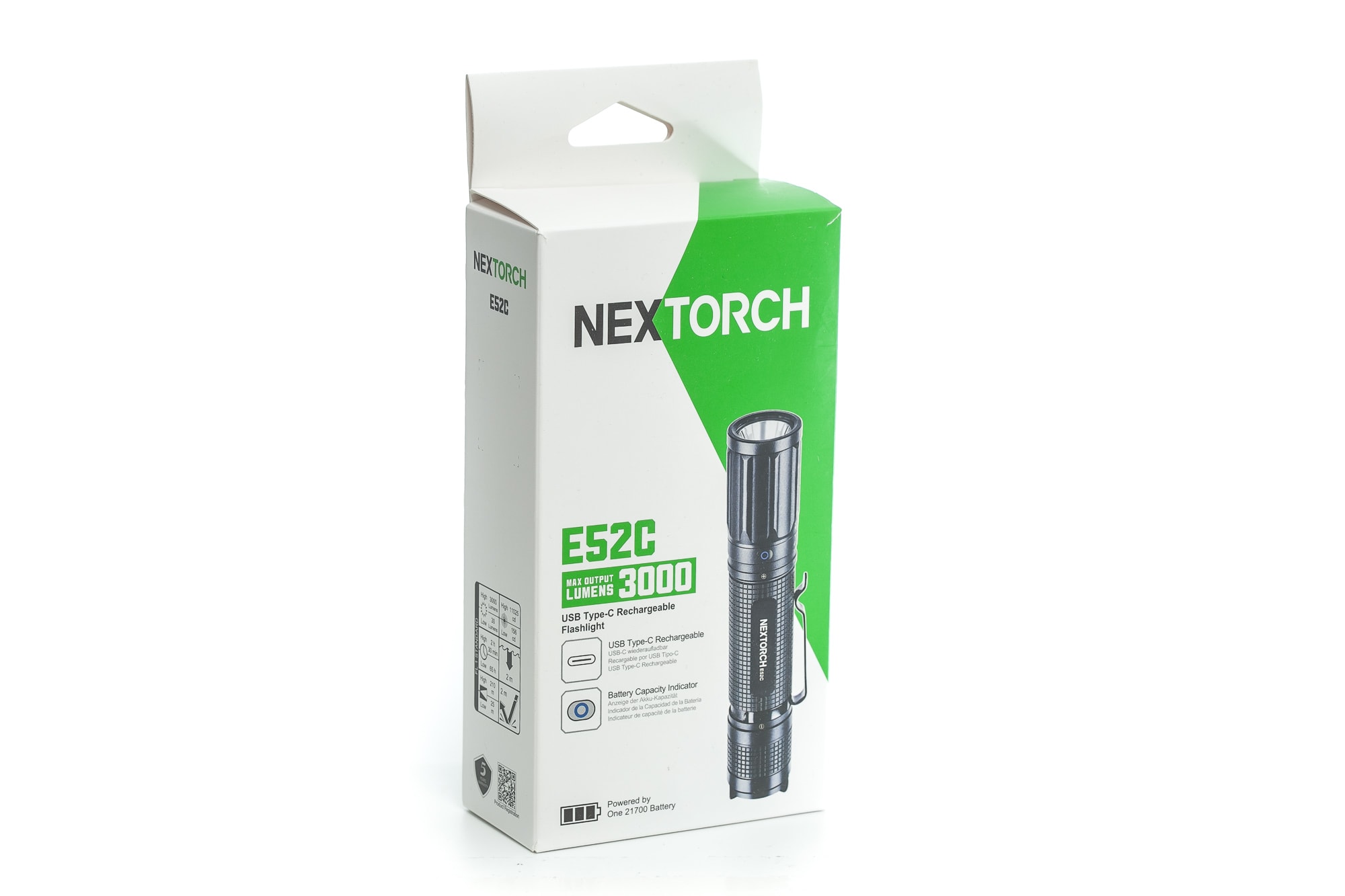

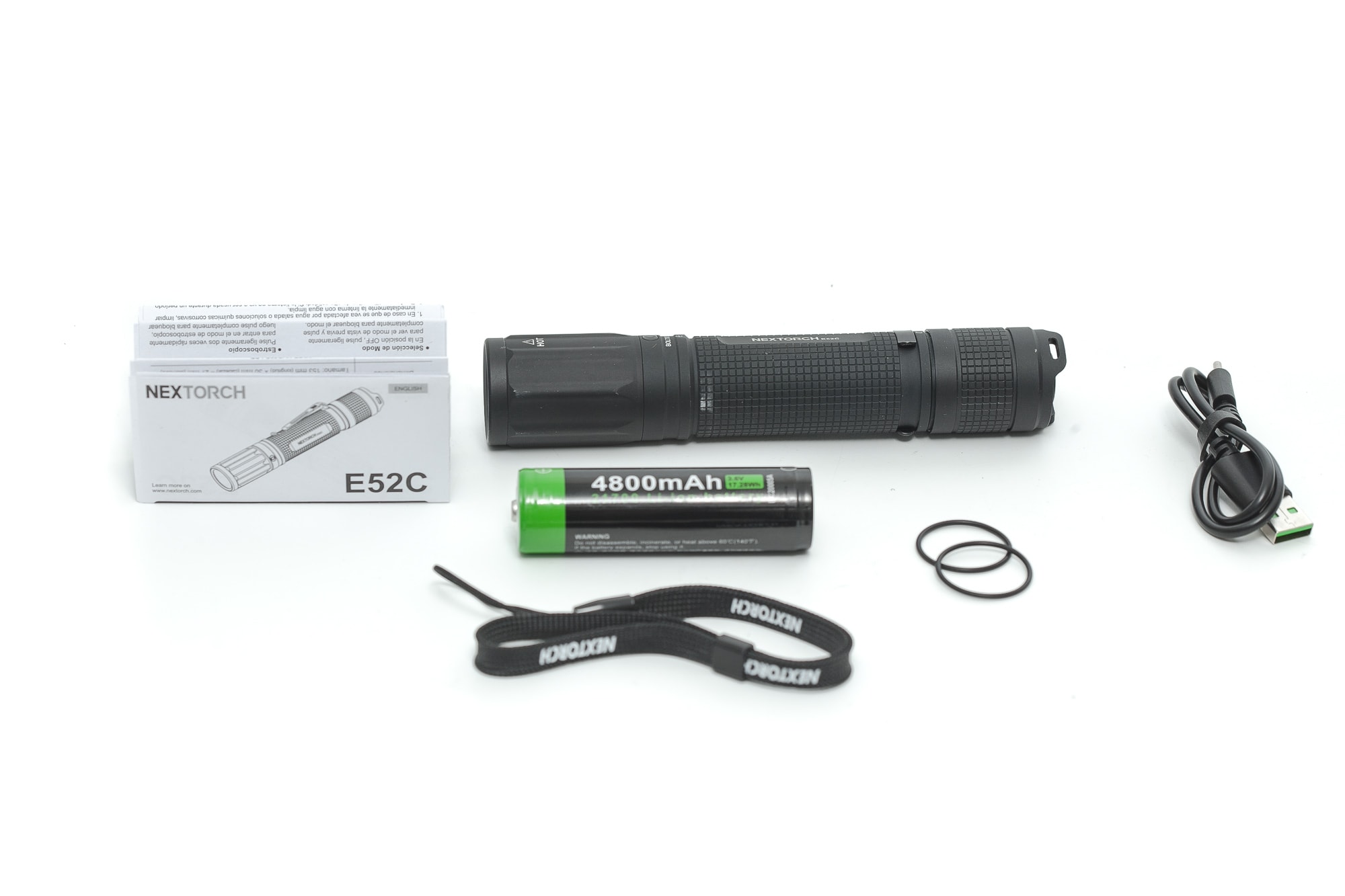
Flashlight in use
The E52C is made of aluminum, with black silkscreen anodization (Type HAIII) and shallow square-shaped knurling, which is typical for NEXTORCH. This all feel pretty nice in hand, and even though the flashlight doesn’t look very rough, it doesn’t feel slippery at all.
The tailcap houses a forward clicky switch, with 2 ridges on each side, that can be used to attach the included lanyard, or any lanyard in that regard. A half press will activate the light momentarily.
If you don’t like using the included lanyard, you still have the pre-attached pocket clip which fits extremely snug. It’s not easy to remove from the batterytube, and it also help as an anti-roll feature.
Being a forward-clicky switch, it feels a bit like a tactical flashlight, because it can be used in the overhand position. If you carry it in the underhand position, you’d have to use both hands to change modes.
Even though it might sound like an EDC flashlight, it definitely fits more into the tactical group.
NEXTORCH mentions the following tasks: Duty, outdoor, Night patrolling, Industrial, Self defence.

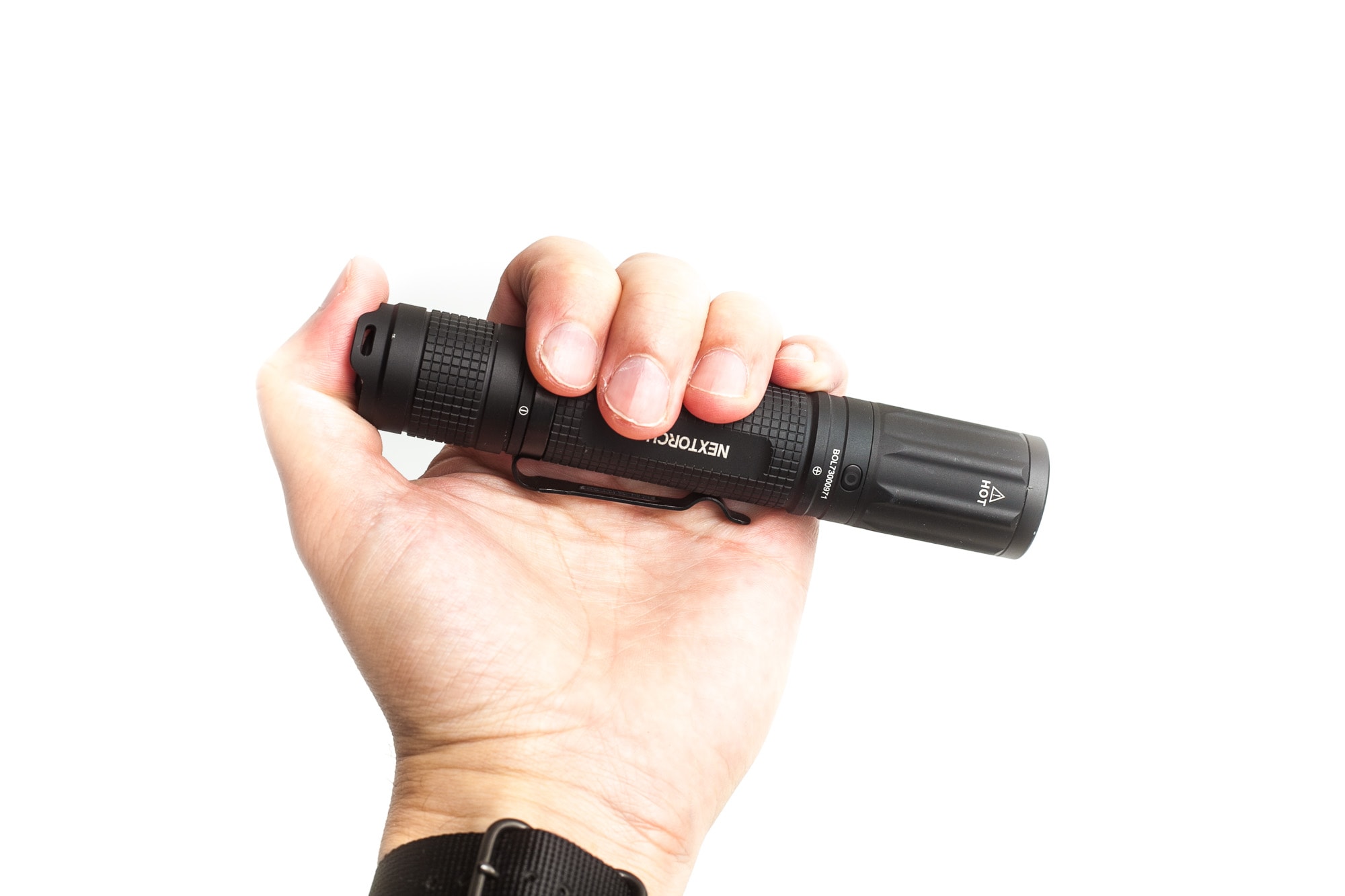
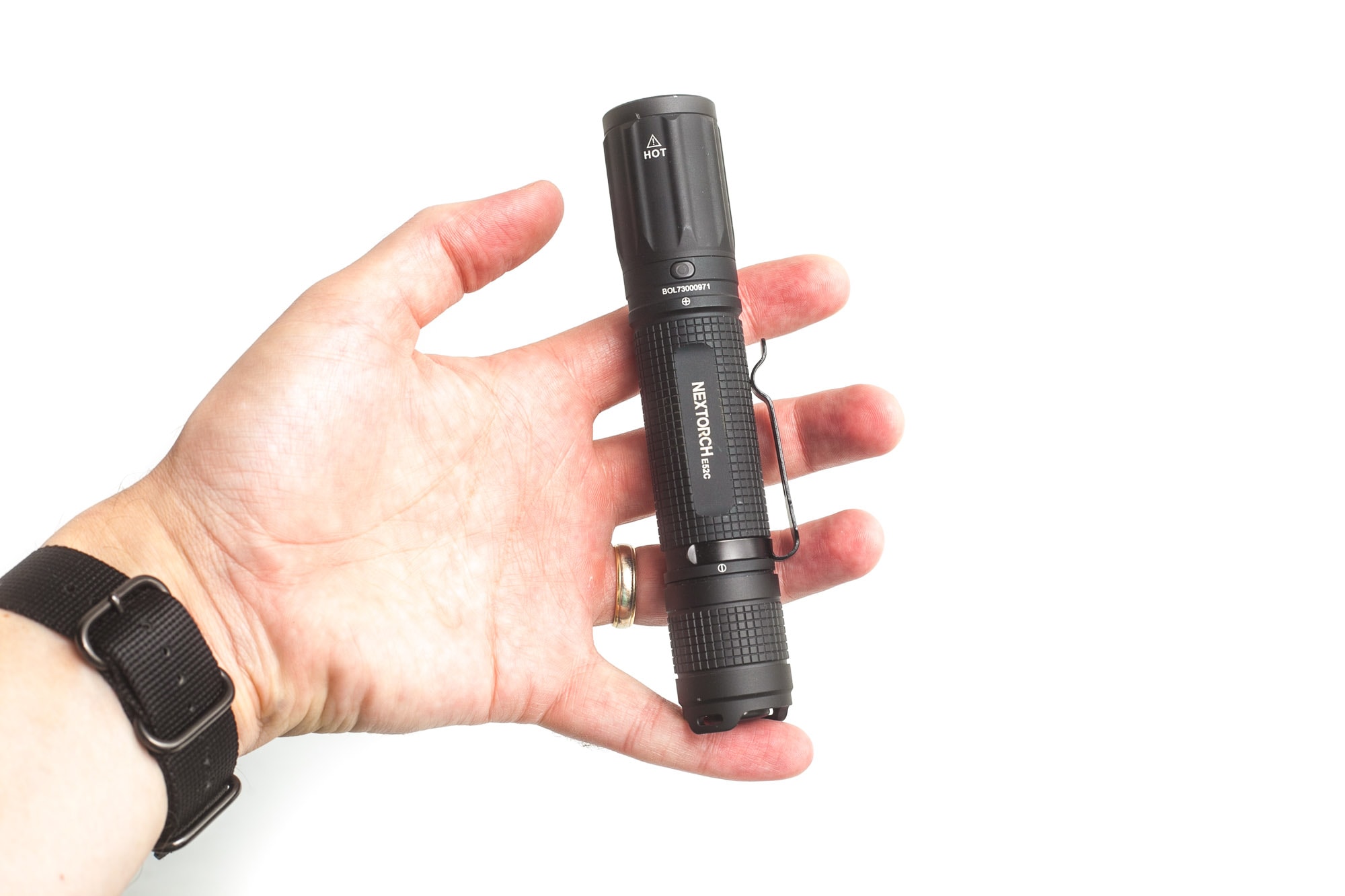
Build Quality and Warranty
The NEXTORCH E52C’s build quality meets my expectations. I have several NEXTORCH flashlights, and although it doesn’t look as good as the NEXTORCH T10L, or NEXTORCH T20L, it’s definitely not a cheap looking flashlight. It’s using durable Type III hard anodized matte black finish, but mine had some minor damage. That’s probably because it went by another reviewers before I received it.
The anodized, threads, with just the right lubrication, are problem-free and can lock the flashlight with a quarter turn. The head of the E52C unscrews but remains attached ,to reach the hidden USB-C port for charging. It’s securely sealed with an o-ring that guarantees effective water resistance.
Warranty:
NEXTORCH® guarantees our products to be free from any defects in workmanship and/or materials for 5 years. If products are found to be defective we will replace them at our sole discretion. NEXTORCH® reserves the right to replace an obsolete product with current production.
NEXTORCH® provides free maintenance service for products with quality problems under normal use within 5 years since the purchase date. Please note, quality problems do not include regular wear and tear or things like the lamp burning out, batteries draining, or switches wearing out. Nor does it cover damages resulting from abnormal use, abuse, neglect, battery damage, use of non-NEXTORCH® brand batteries or accessories, unauthorized modifications or repairs.
The above warranty excludes accessories, while chargers and rechargeable batteries are covered within one year.
In the event that any issues with a NEXTORCH® product are not covered under this warranty, NEXTORCH® can arrange to have the product repaired or replaced for a reasonable fee.
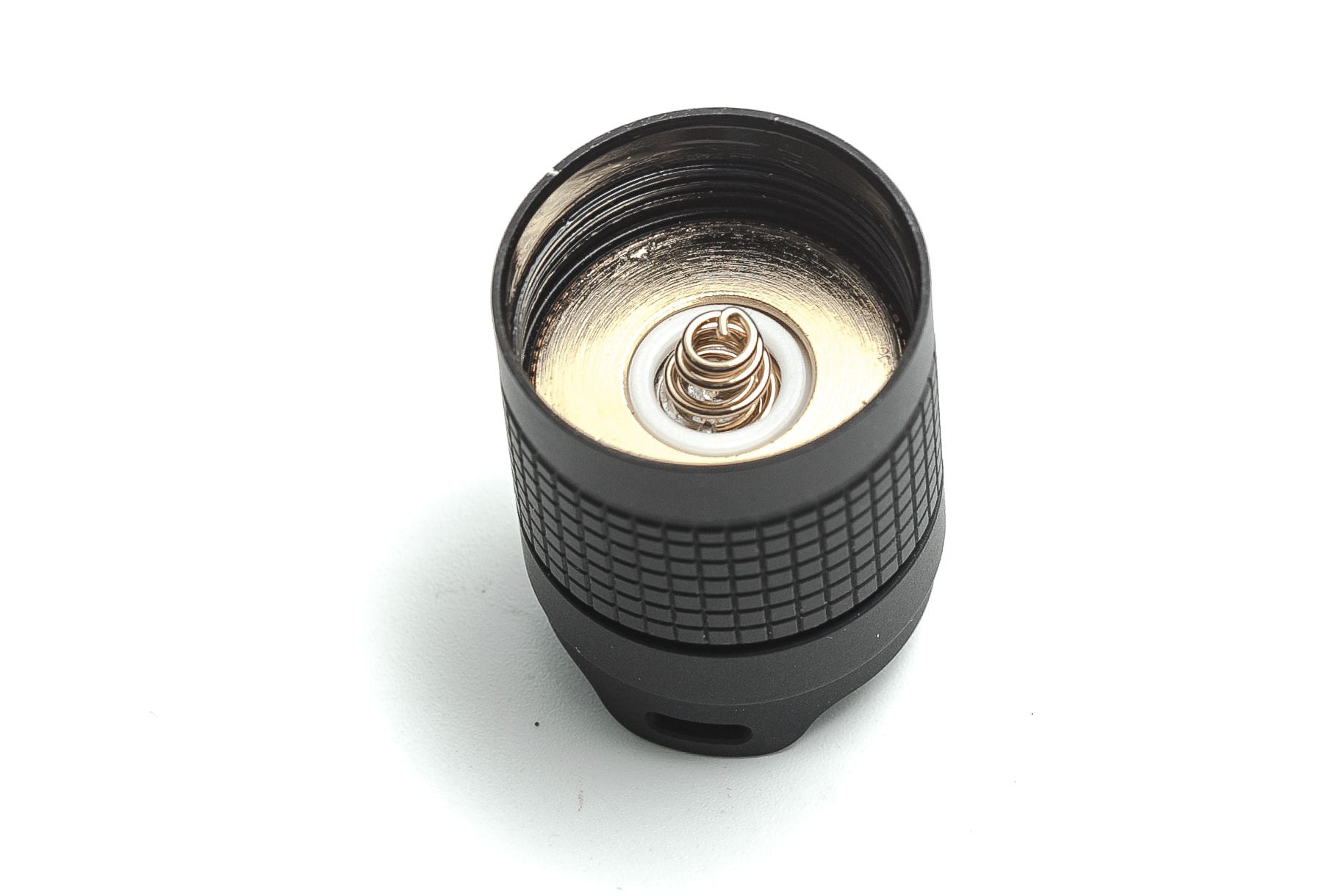
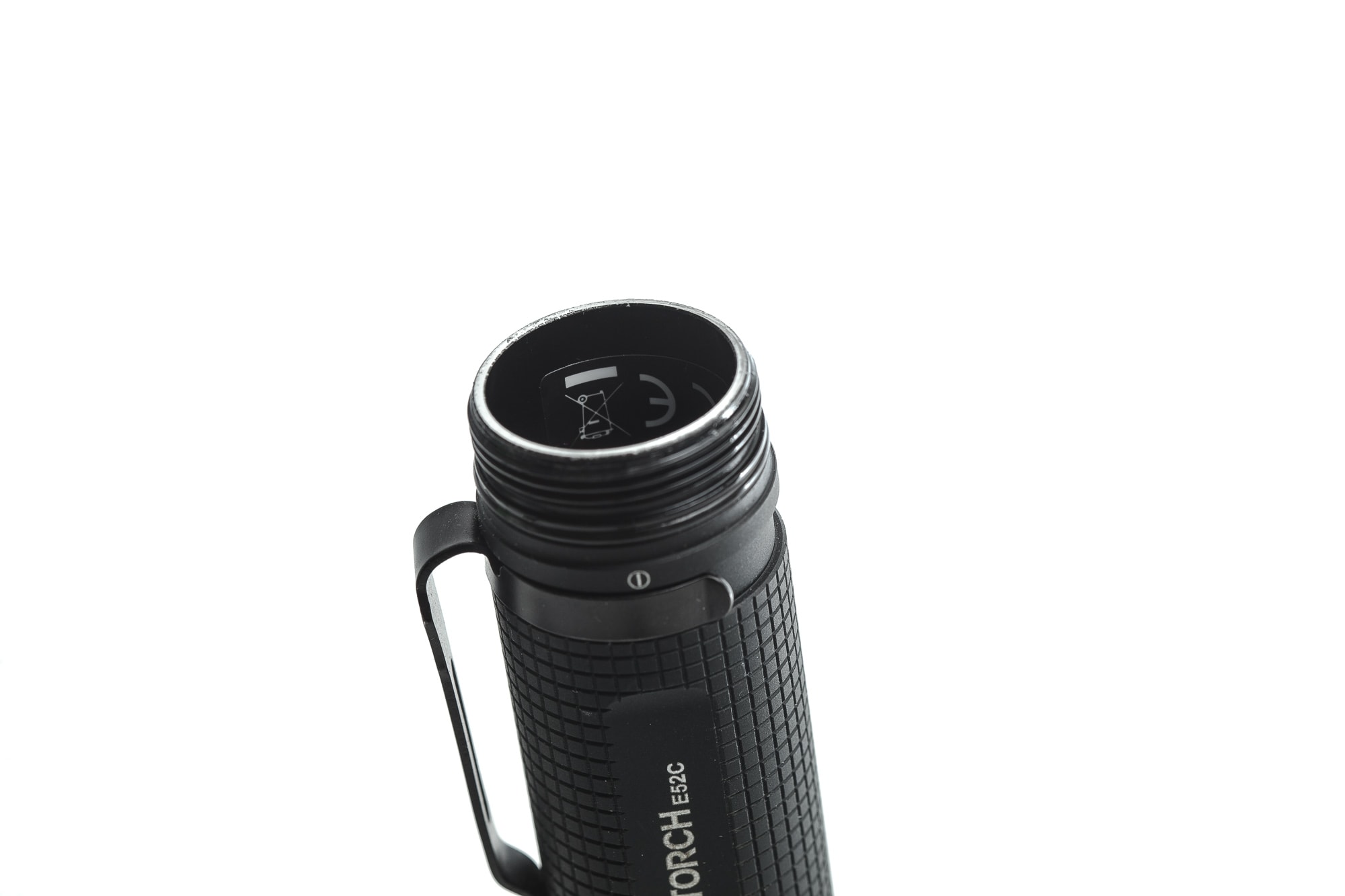
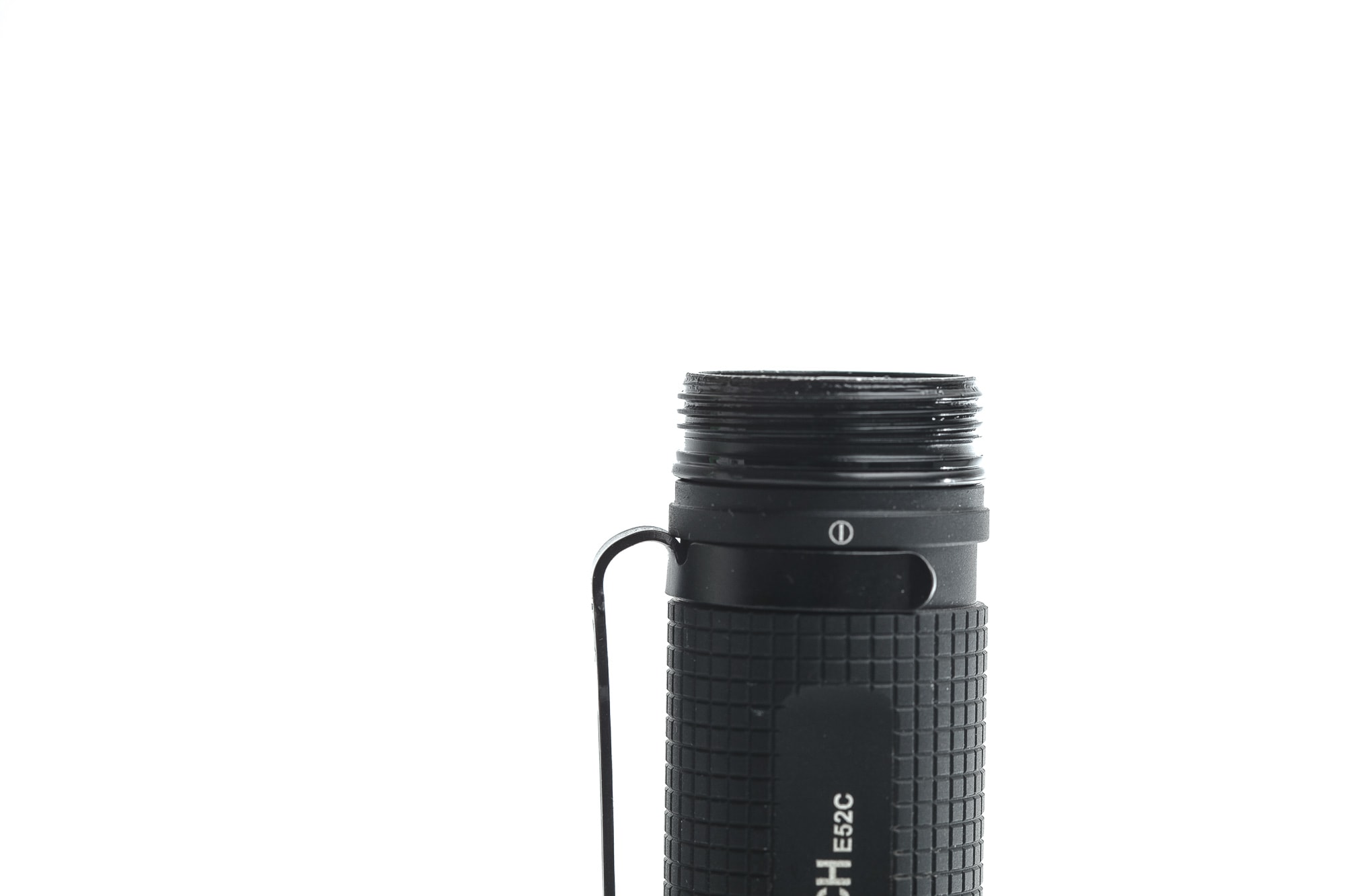
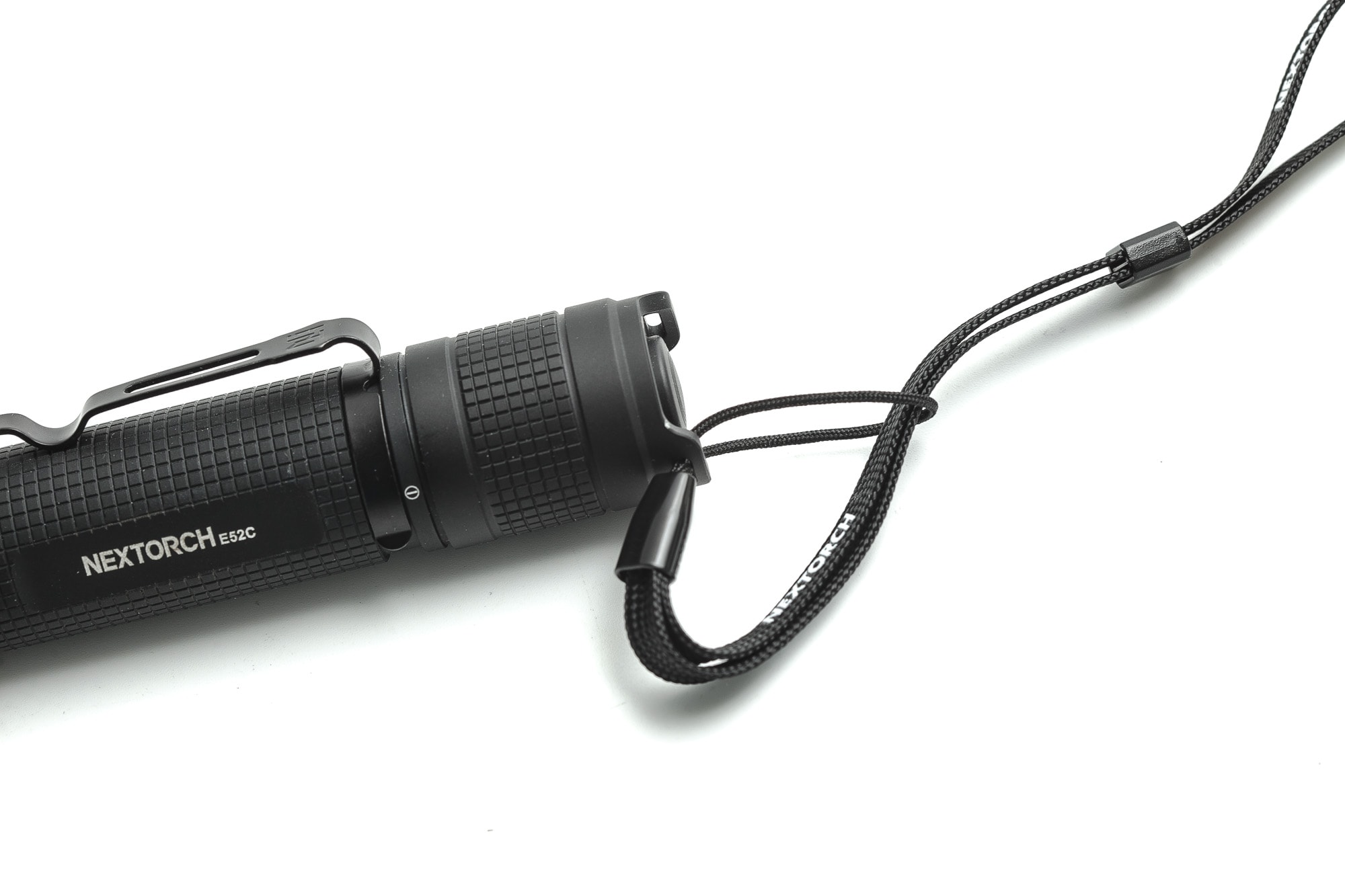
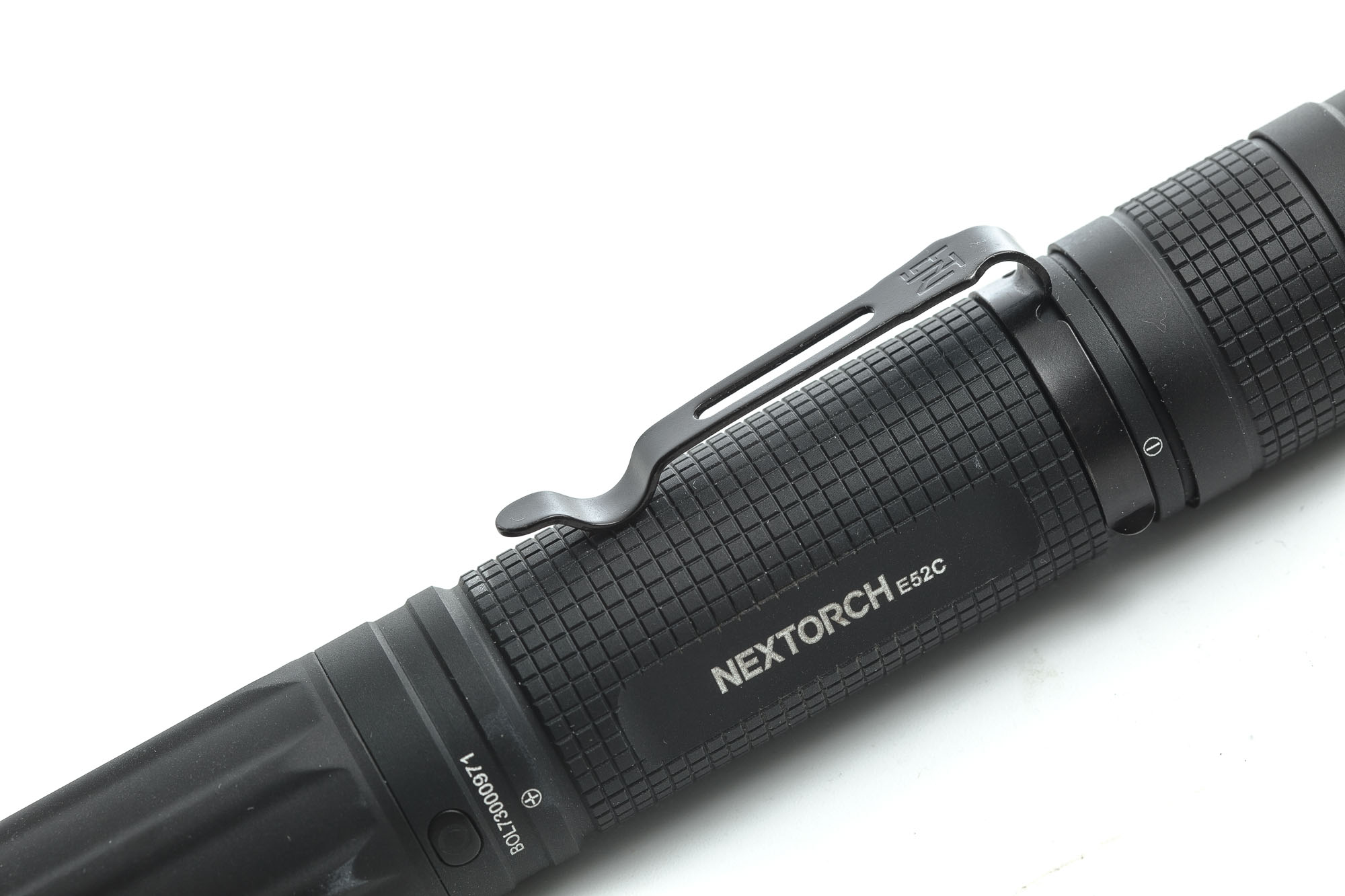
LED, Lens, Bezel, Beam, and Reflector
While the E51C used a OSRAM P9, the new E52C is using a CREE XHP50, and they name it the XHP50B, which is probably just the XHP50.2. And with a light orange peel reflector, you get the unpopular color shift, which many XHP LEDs suffer from. The beam is very wide, and floody, and there is a hotspot, but the spill is also plenty bright, so the hotspot itself is not too distinct.
The bezel is flat, and protects the AR-coated lens from most kinds of impacts.
The beam was measured with the Sekonic C800 spectrometer, instead of the Opple Light Master 3 I used before. I have another Spectrometer, but it’s stored in a place I couldn’t reach during this review.
Here are the measurements:
- CCT: 8035K
- CRI Ra: 71.9
- duv: -0.0080
This means that the light is very cold, and with a negative duv has a pinkish tint, and in the middle. If you look at the beam itself, you can see the transition to a greenish outer ring.
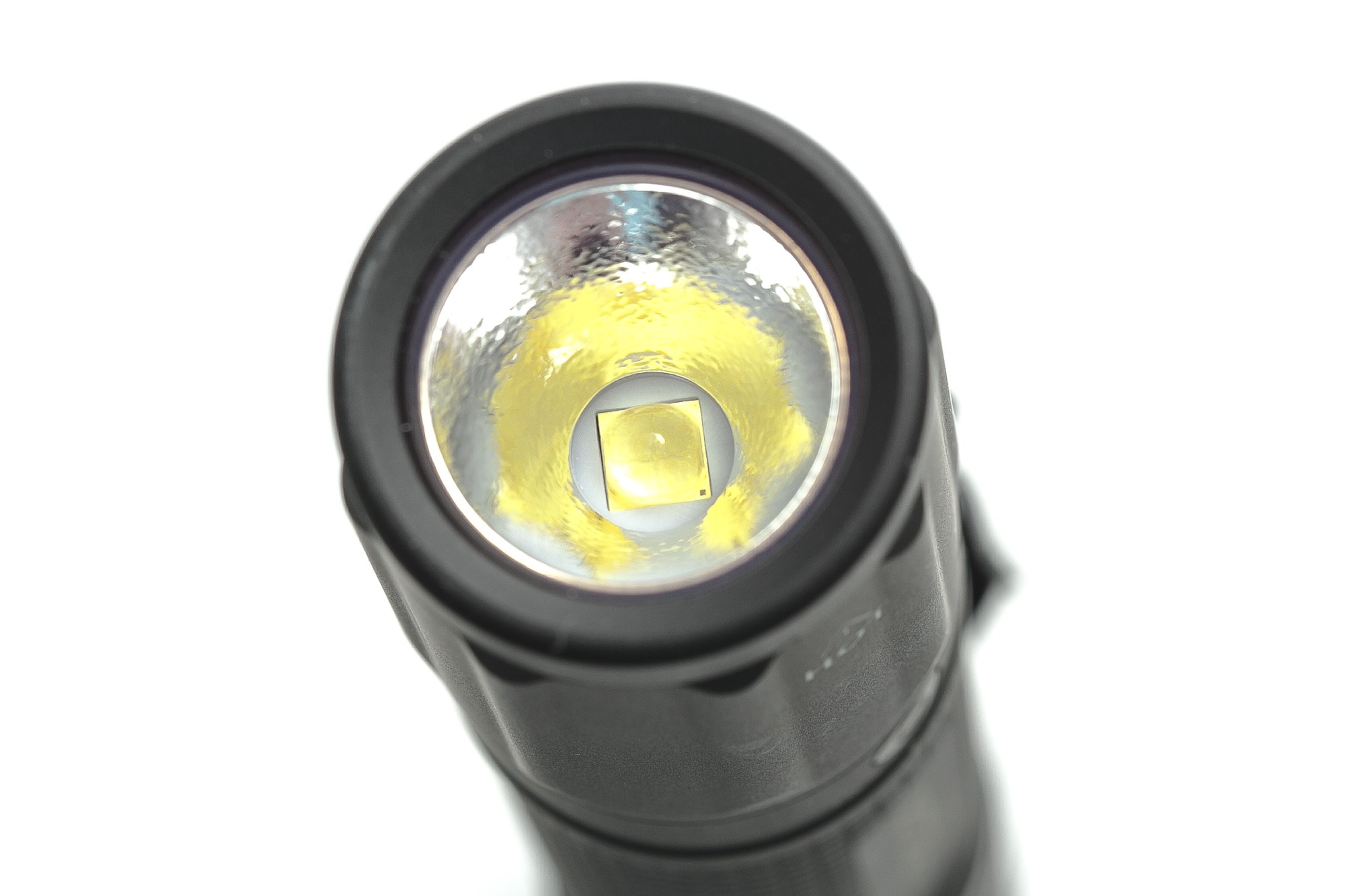
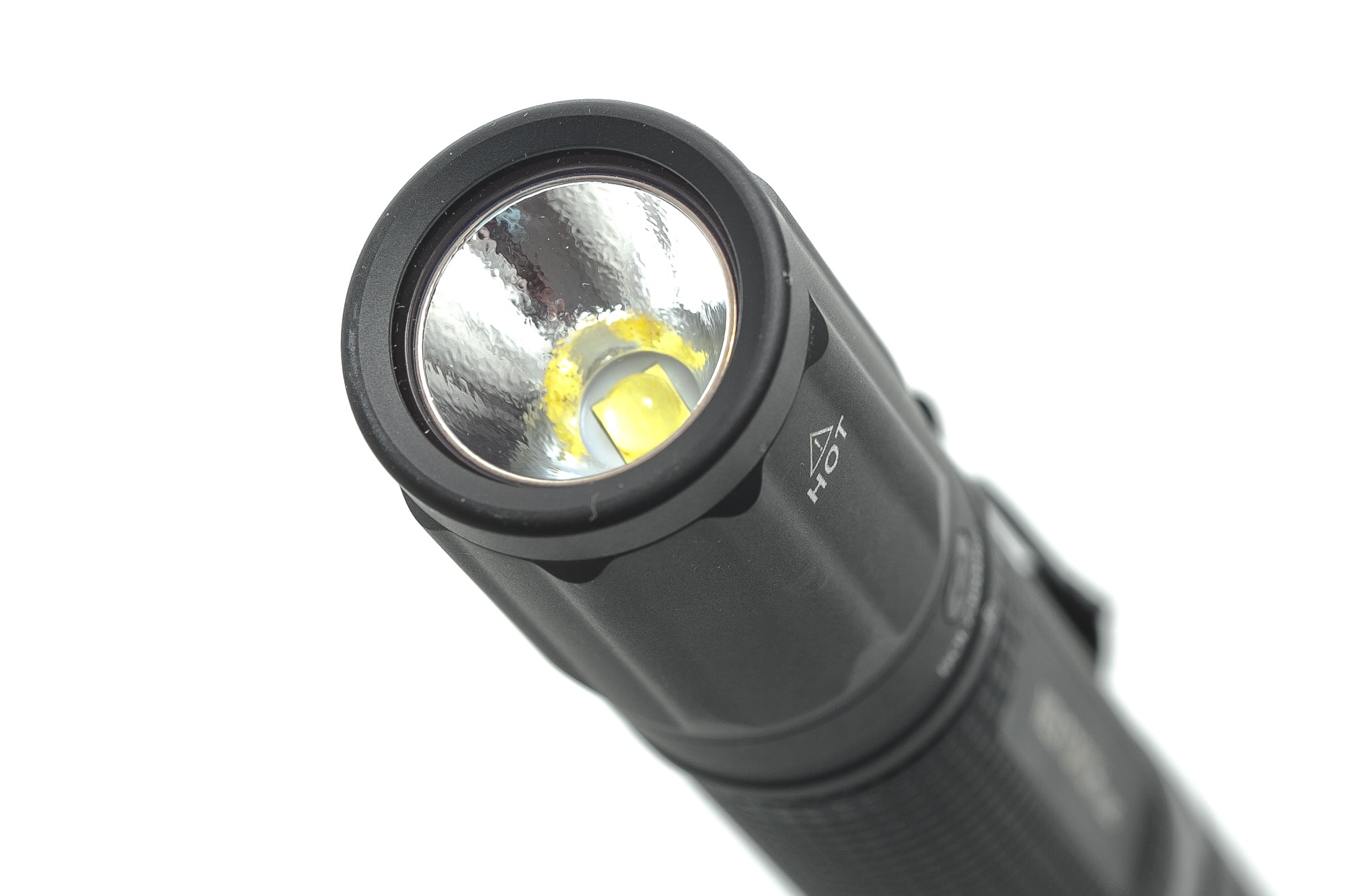
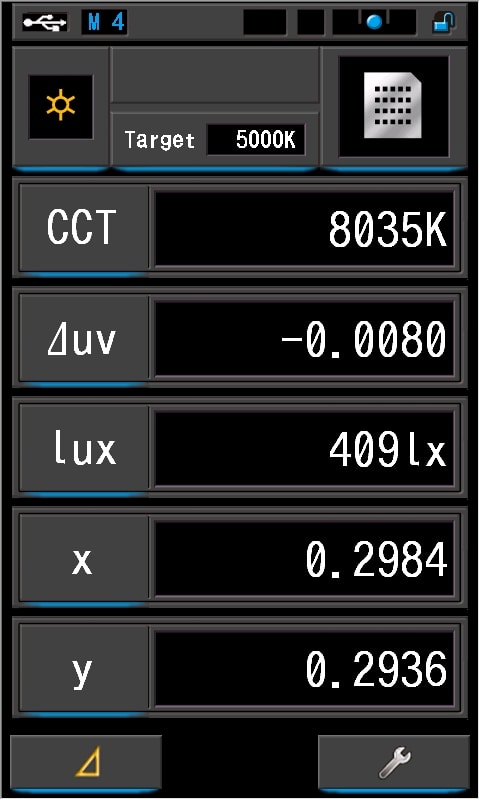
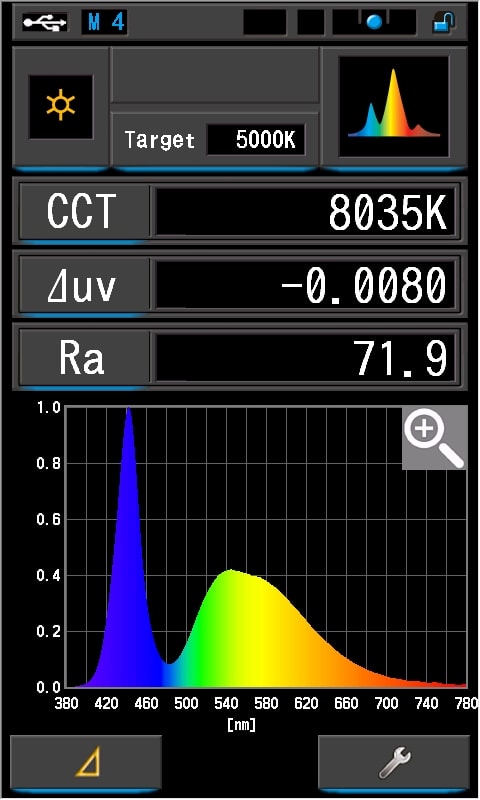
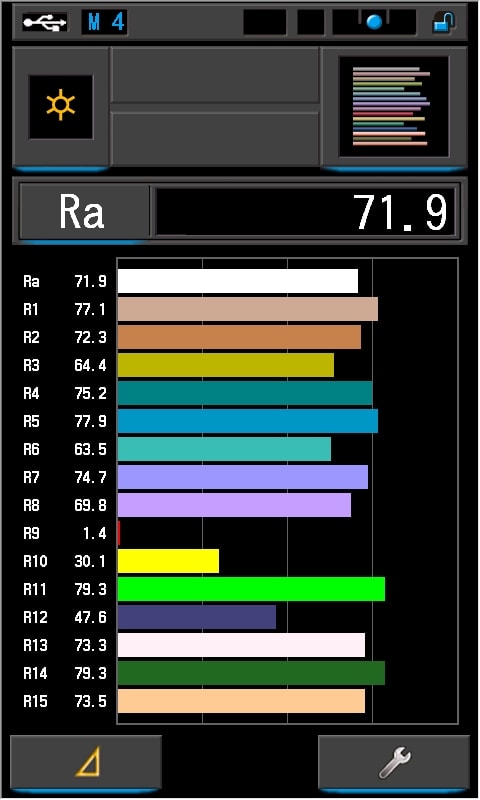
Dimensions and its competition
Dimensions:
| NEXTORCH E52C | Millimeters | Inches |
|---|---|---|
| Length | 154 mm | 6.1 in |
| Head diameter (widest) | 30 mm | 1.2 in |
| Tailcap diameter | 28 mm | 1.1 in |
Dimensions are rounded to the nearest millimeter, and to the nearest tenth of an Inch.
Weight:
| NEXTORCH E52C | Weight in grams | Weight in oz. |
|---|---|---|
| Without battery: | 128 g | 4.1 oz |
| With battery | 200 g | 6.4 oz |
Weight is rounded to the nearest gram, and to the nearest tenth of an Oz.
NEXTORCH E52C comparison
Size compared to a few tactical flashlights, and EDC flashlights
From left to right: NEXTORCH E52C, Olight Warrior 3 (21700), Fenix PD36R (21700), Wurkkos TS21 (21700), Acebeam E70 Mini (18650), Olight Warrior Mini 3 (18650).
The 2 flashlight on the right use a 18650 battery, and the others 21700. You can see that the E52C is very large for being an EDC flashlight, and is likely more of an tactical flashlight.
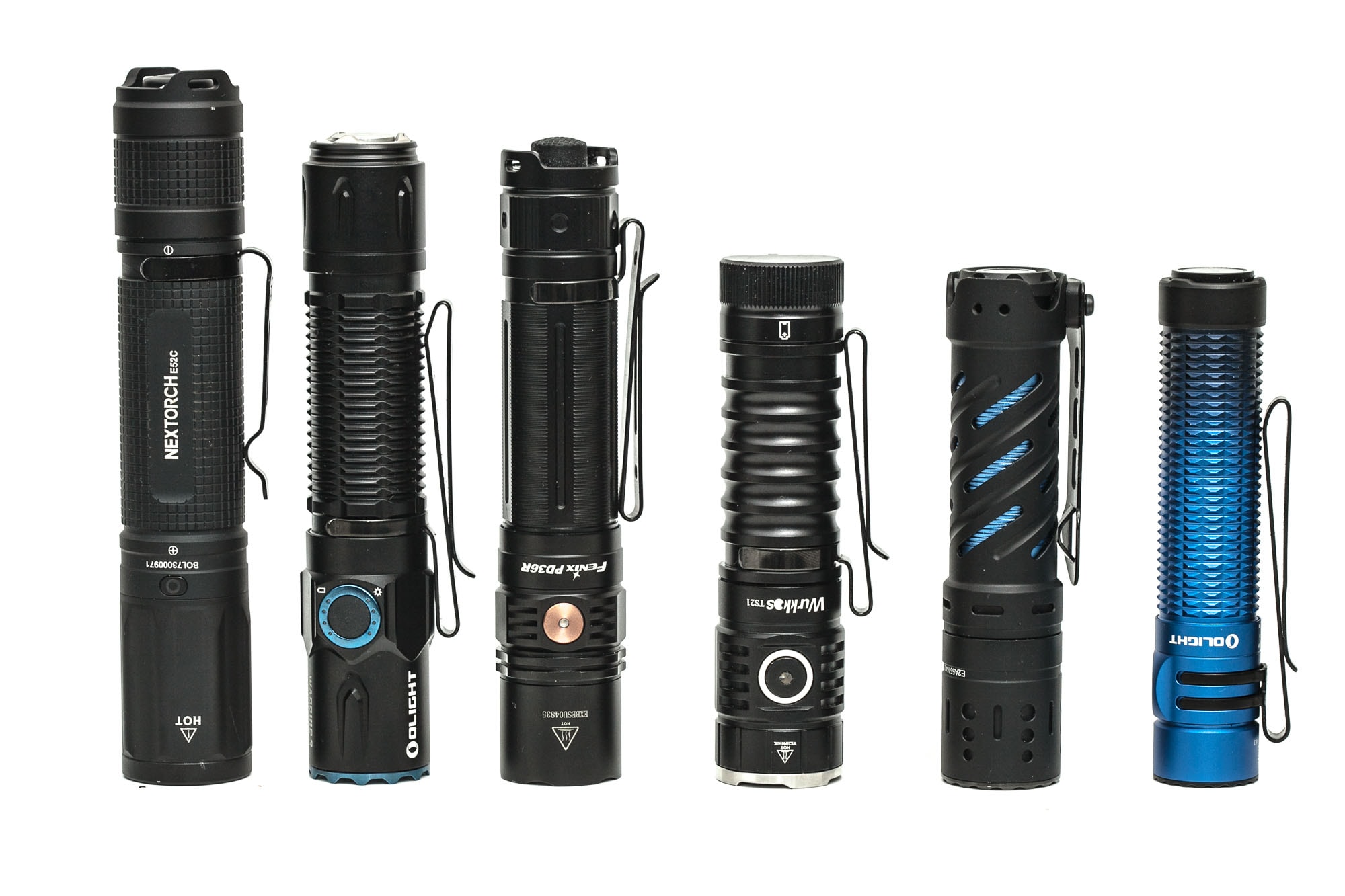
NEXTORCH E52C UI : User interface and driver
Half presses before a full click will run you through the modes. Fast tapping will activate strobe.
Available modes:
- High, Medium, Low (in that order)
Available blinky modes:
- Strobe
From OFF:
- Half Press: High Mode
- Half Presses: Switch Between Output Modes from High to Low
- Click (when mode has been selected): Lock in Current Mode
- Double Half Press: Momentary Strobe (and full click will activate it)
From ON:
- 1 Click: Off
Mode memory:
- No memory mode. The first setting is always High.
Shortcuts:
- To Strobe: Double Half Press for momentary or Half Press and Click to lock in that mode.
Low voltage warning:
- The battery indicator will show the charge status:
- Blue: 75-10%
- Blue flashing: 50-75%
- Red: 20-50%
- Red flashing: 0-25%
Strobe/blinkies
- Strobe will activate with a double half-press for momentary or a half-press and click to lock it in strobe mode.
Lock-out mode:
- No intended lockout, but you can disengage the circuit by a twist of the tail cap as the threads are anodized.
PWM
- No PWM was visible
NEXTORCH E52C Charging and batteries
NEXTORCH moved from a 18650 battery in the E51C to a 21700 in the E52C. This increases the diameter of the battery tube by about 3 millimeters. Not much, but to me, a 21700 flashlight feels just a bit nicer in hand than an 18650.
The included cell has a capacity of 4800mAh, and is labeled NEXTORCH DC20005A. It’s longer than a unprotected 21700 battery. A full charge inside the flashlight took 4 hours and 44 minutes.
With the E52C, you don’t need to invest in a 21700 battery charger, because it has onboard charging via a hidden USB-C port. The USB-C port becomes visible when the head is unscrewed from the body, but the head will never detach. Once unscrewed, simple connect it with a USB-C cable, and you’re ready to go.
The included charging cable is USB-A to USB-C, and the E52C does not charge when using an USB-C to USB-C cable.
Flat top, unprotected batteries won’t fit because they are too short to make contact.
I tested the end Voltage by slightly discharging the battery, and then charging it. I was surprised to see the end voltage being 4.24V. That’s too high!
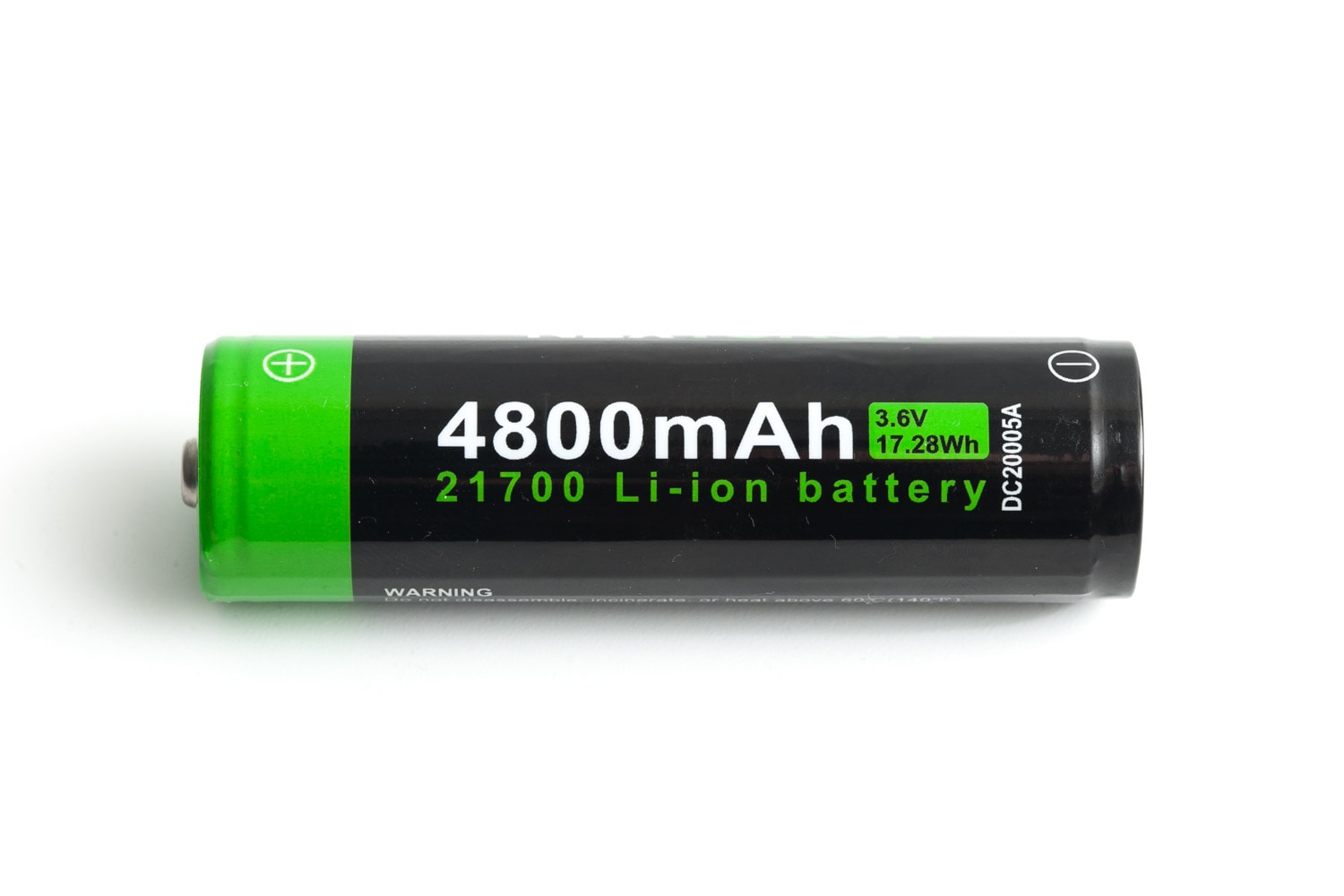
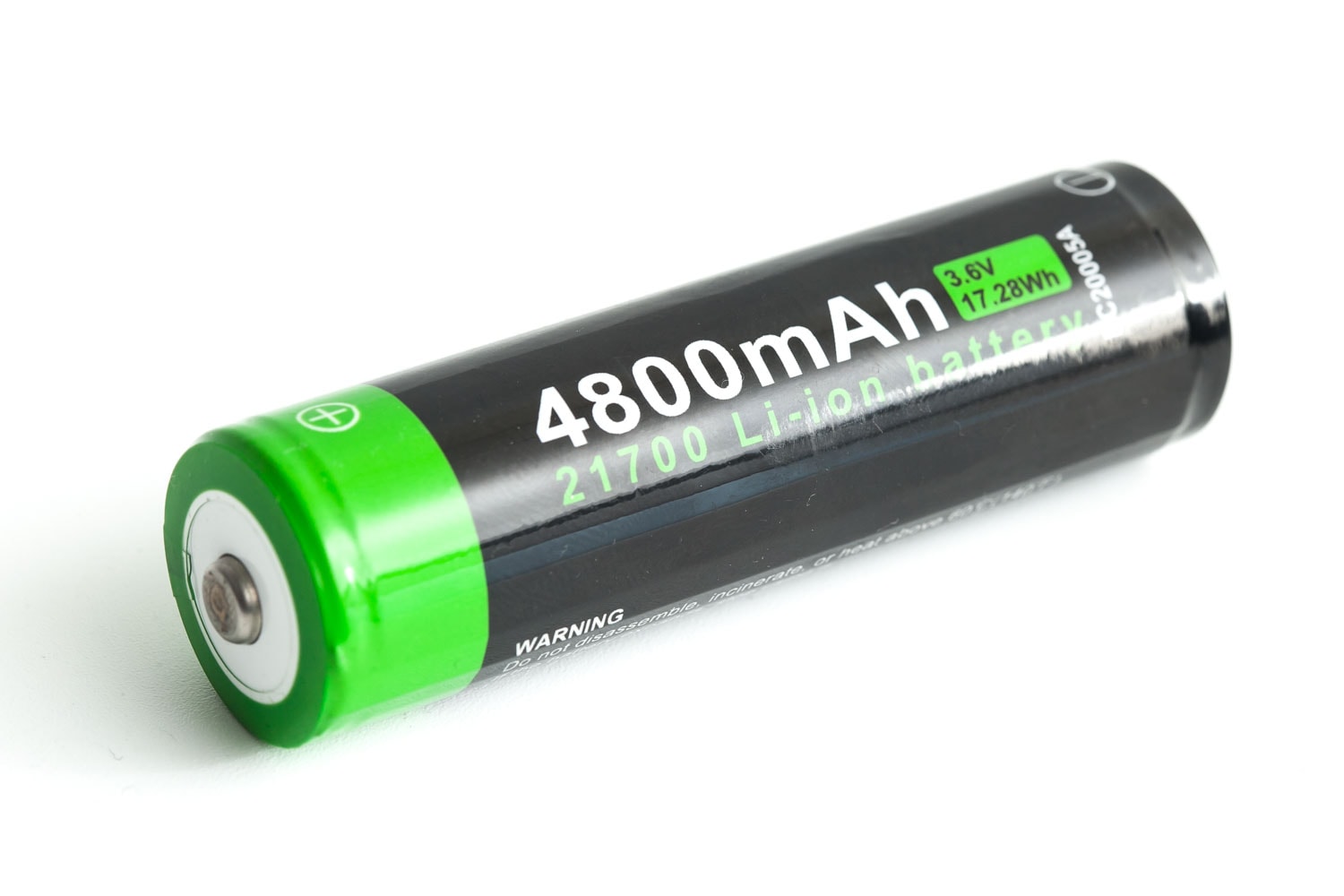
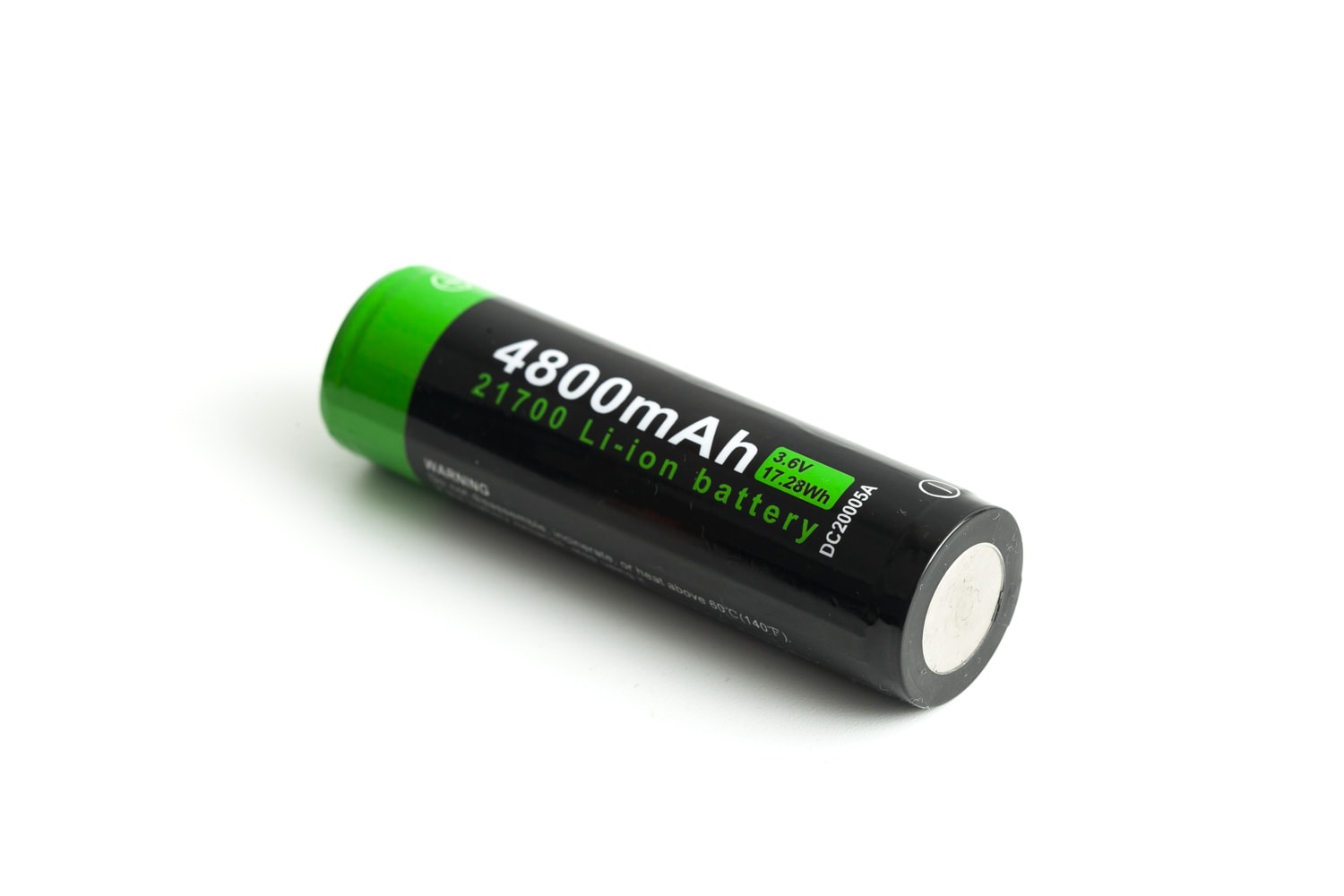
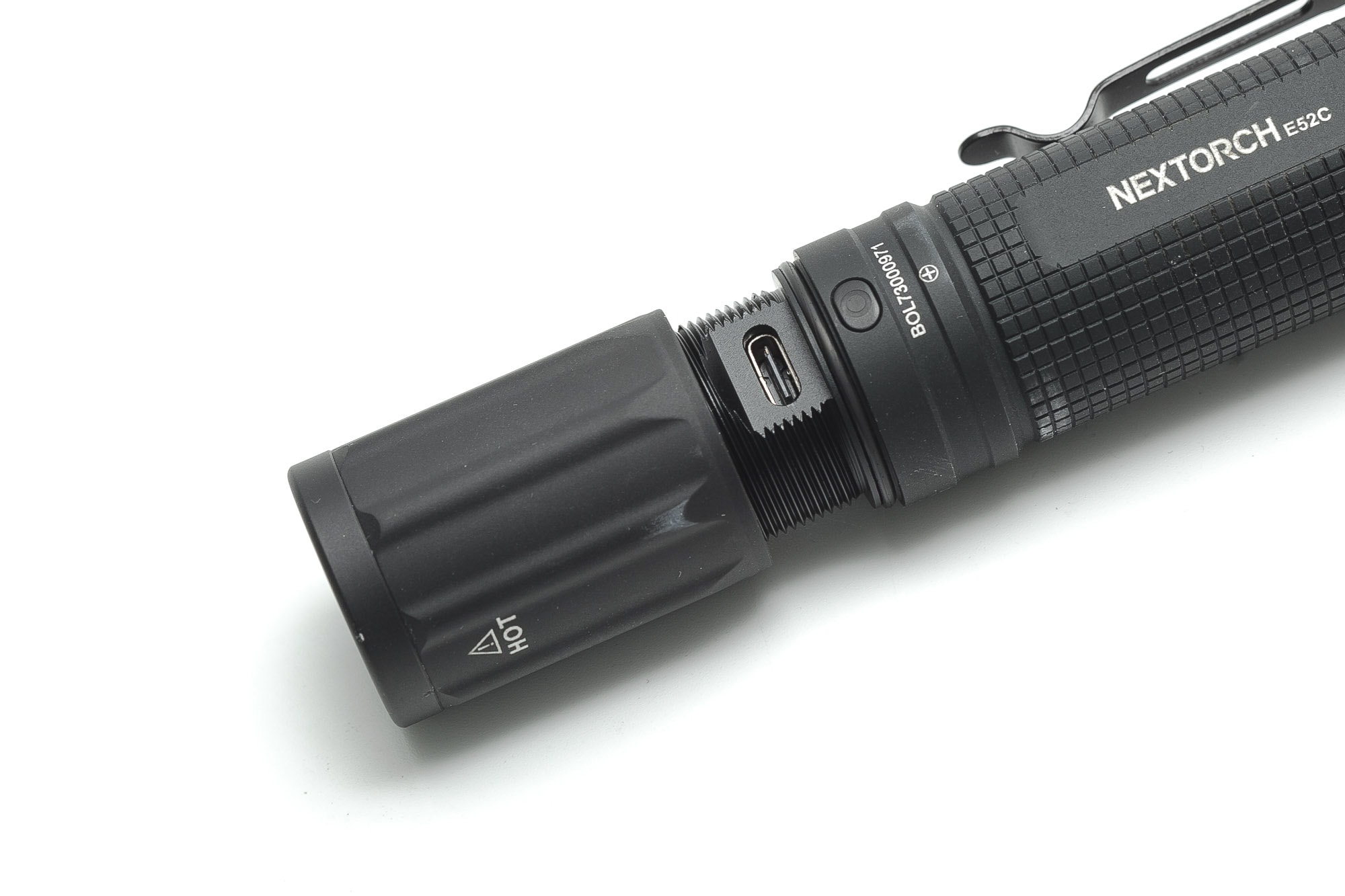
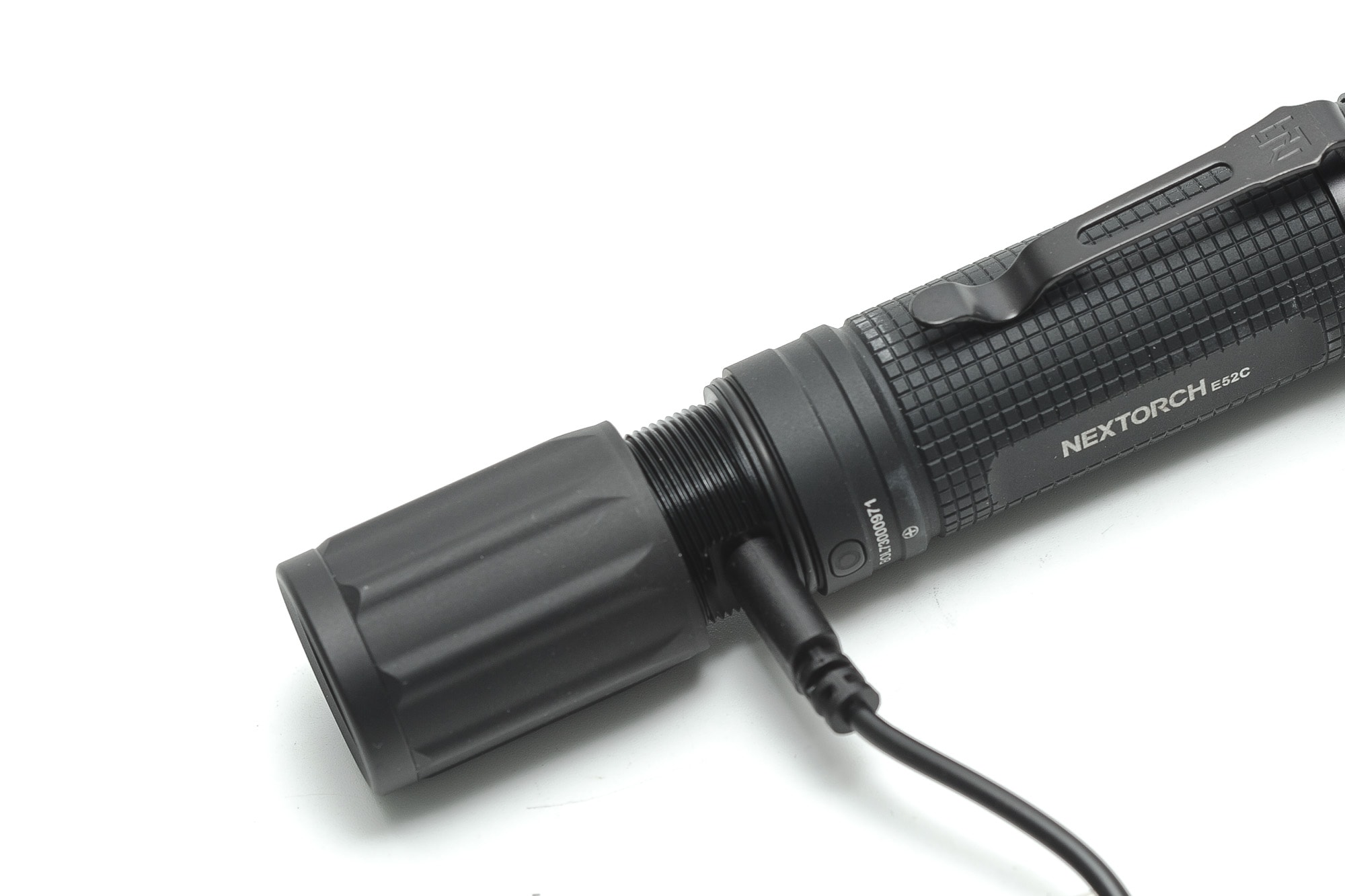
Performance test
This is the gear I use for testing:
| Gear | Purpose | Link to buy |
|---|---|---|
| Hagner E4-X | Measuring beam intensity (throw) | Inquire at Hagner.se |
| 2* Extech SDL400 | Lumens and logging runtimes | Amazon.com, Amazon.co.uk, |
| Leica Disto D2 | Distance for throw measurements | Amazon.com, Amazon.co.uk, |
| Sekonic C-800 | Spectrometer for LED measurements | Amazon.com, Amazon.co.uk |
| Uni-T UTi260B | Thermal Image camera | Amazon.com, |
Lumen measurements:
How Lumens are Measured: Understanding ANSI FL1 Standards How Lumens are Measured: Understanding ANSI FL1 Standards: The ANSI FL1 standards specify that output in lumens should be measured 30 seconds after turning on, as this is the standardized time for measuring brightness according to the industry standard. This is why we focus on this part in our measurements. The ANSI FL1 standards require an ambient temperature of 22 ± 3°C. We record the ambient the ambient temperature to identify potential reasons for any observed discrepancies.The output measurements in this review are based on my homemade integrating spheres, each equipped with an Extech SDL400 Lux Meter. For consistency and accuracy, a calibration light (Convoy S2+ with 249lm and a Convoy S2+ with 261lm) is measured prior to each set of lumen measurements.
For high-output lights, one of the lux meters uses an ND camera filter to prevent the lux meter to max out. This is either the Kenko PRO1D ND16 up till about 80,000 lumens or Gobe ND32 for anything above.
All of my readings were taken from a fully-charged NEXTORCH 4800mAh 21700 battery.
The measurements were taken manually at turn on and 30 seconds. The 10 minute numbers are taken from the runtime graph.
| NEXTORCH E52C | Specified | Turn on | 30 sec | 10 minutes |
|---|---|---|---|---|
| Low | 30 lm | 38 lm | 38 | – |
| Med | 550 lm | 634 lm | 630 | 626 |
| High | 3000 lm | 3455 lm | 3258 lm | 543 lm |
| High at 3.7V | 1606 lm | 1479 lm |
I didn’t do a runtime test in Low mode, because it would take 65 hours according to the manual.
I like the fact that even at 3.7V, the E52C can still produce 1600 lumens at turn on, and 1479 after 30 sec. It’s noticeably lower than at full charge (4.2V), but this is something people want to see. I do these tests with a specific battery which is discharged to something between 3.6-3.8V, and check the battery for each test. This time, the battery was exactly at 3.7V
Oh, and all modes measured higher than specified!
NEXTORCH E52C Battery life and runtime
How Runtimes are Measured: Understanding ANSI FL1 Standards About ANSI FL1 runtime standards: The runtime is measured until the light drops to 10% of its initial output (30 seconds after turning on). This does not mean that the flashlight is not usable anymore. The last column shows how long the light actually works till it shuts off. If there is a + symbol, it means that the test was stopped at that particular point, but the light was actually still running. This happens on certain occasions, with certain drivers, firmware, or batteries.The runtime test was done with the 50cm integrating sphere, including the Extech SDL400 data logging Lux Meter.
| Mode | Specified runtime | Measured runtime (ANSI FL1) | Time till shut off |
|---|---|---|---|
| Low | 65h | – | – |
| Med | 4h 15min | 4h 33min | 10h 29min+ |
| High | 2h 30min | 3h 19min | 6h 35min+ |
The runtime didn’t finish yet when I stopped it. I noticed after the first runtime that the battery went down to 2.51V, which is kind of low in my opinion. You can also see that the output is not regulated.
I would not recommend doing this, so charge the battery, when the output reduces to below 100 lumens.
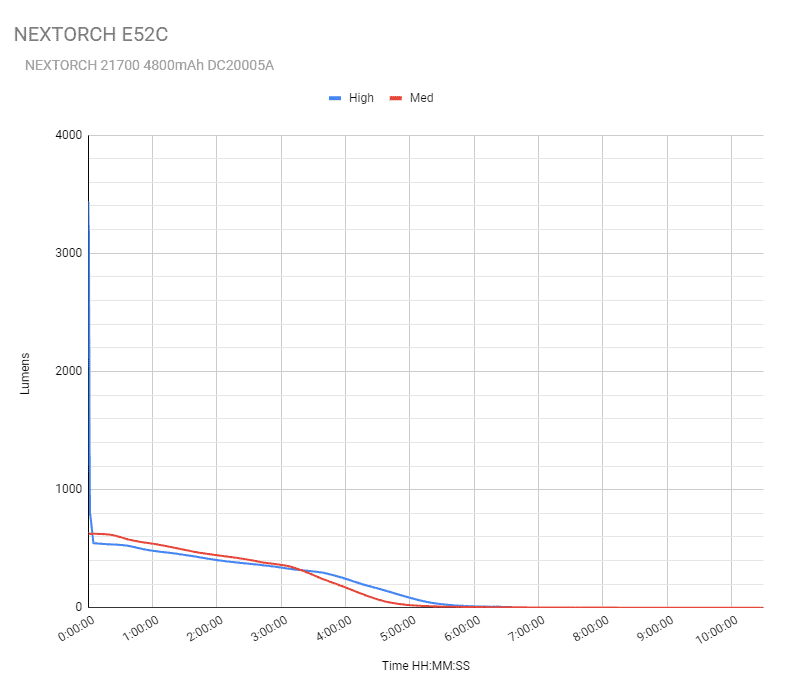
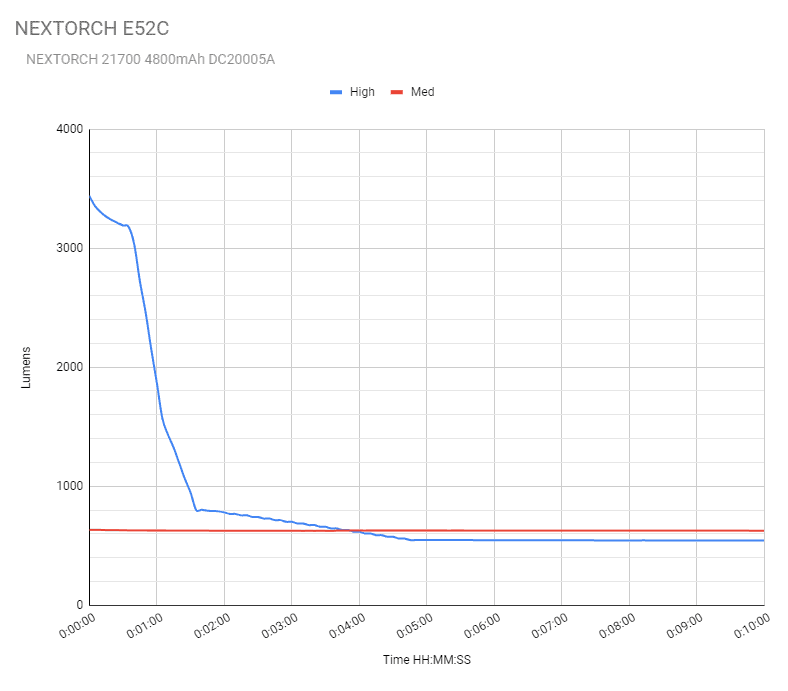
NEXTORCH E52C Peak beam intensity and beam distance measurements
About Peak beam intensity: Understanding ANSI FL1 Standards About peak beam intensity The calculated value of distance in meters at which the flashlight produces a light intensity of 0.25 lux. (0.25 lux is about the brightness of a full moon shining on an object). This means that the intensity has decreased so much, it becomes difficult to see darker objects, or objects that don’t reflect light. The columns ‘Meters’ and ‘Yards’ use rounded numbers.Measurements were taken indoors at 5 meters with a Hagner E4-X Lux Meter. The measurements were taken 30 seconds after turn on.
| NEXTORCH E52C | Specified | Candelas | Meters | Yards |
|---|---|---|---|---|
| Low | 156 cd | 150 | 24 | 27 |
| Med | 2,500 cd | 2,550 | 101 | 110 |
| High | 11,025 cd | 13,825 cd | 235 | 257 |
Again, the beam intensity was higher than specified. At turn on, it could easily reach 14,000 cd.
Beamshots
For the following beamshots, I used a Canon EOS 5D Mk2 with a 50mm lens. Manual settings: ISO1600, 1/4sec, F4, 5000K
The shed is about 65 meters / 71 yards away, and the reflective fence about 200 meters.
Compared to the following flashlights:
- NEXTORCH E52C
- Acebeam E70 mini
- Acebeam E70
- Olight Warrior 3S
- Olight Warrior X3
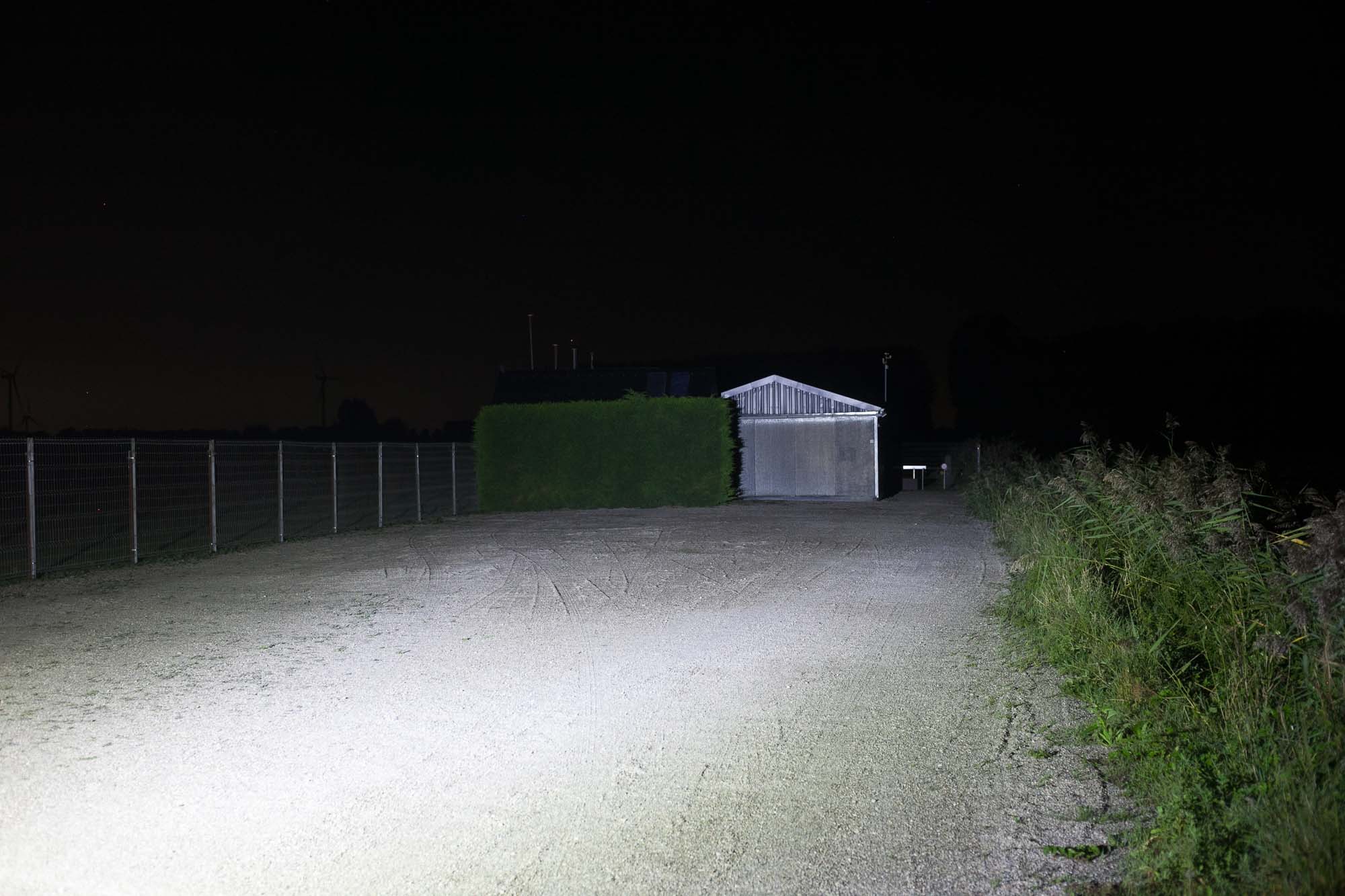
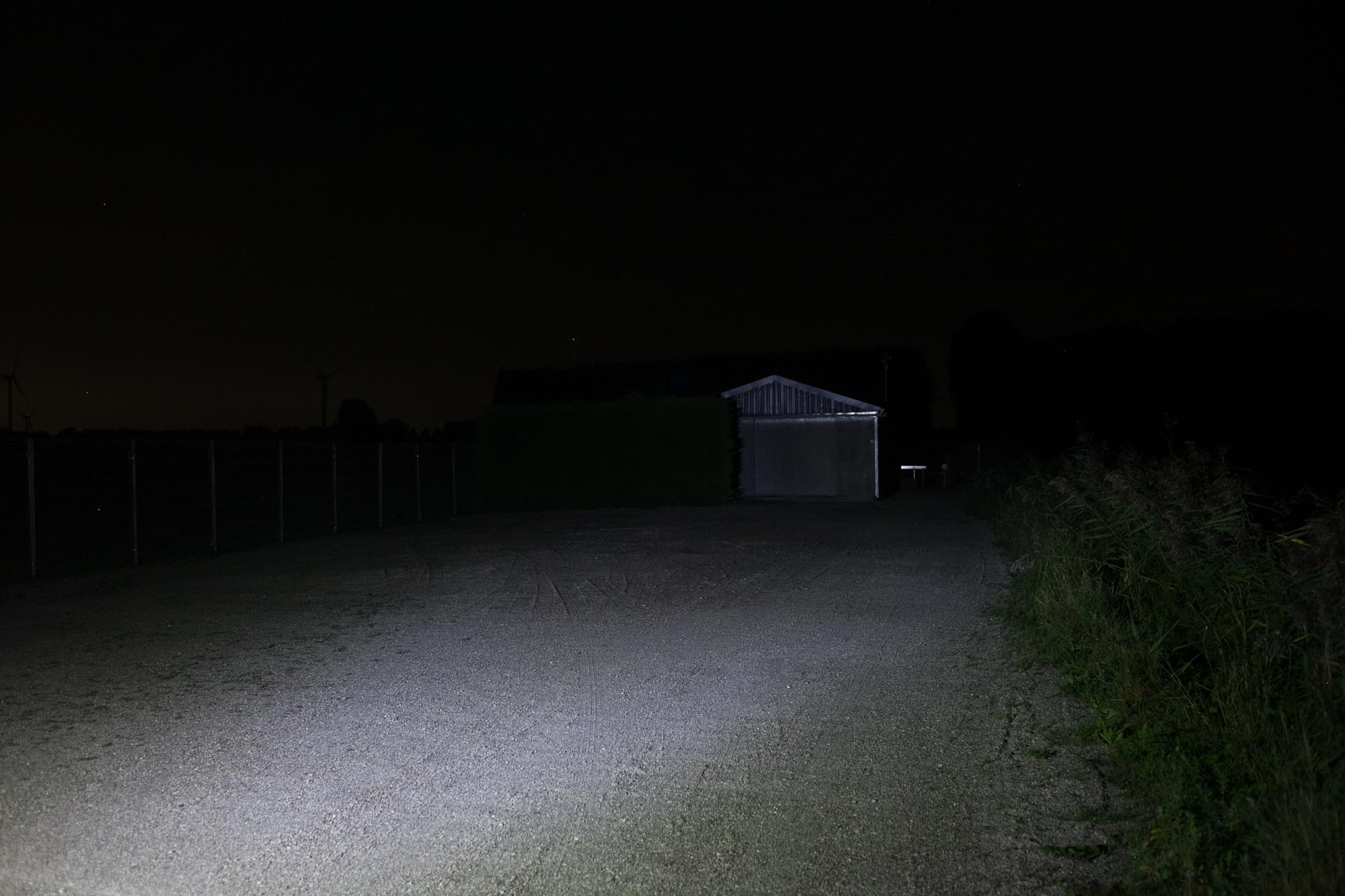
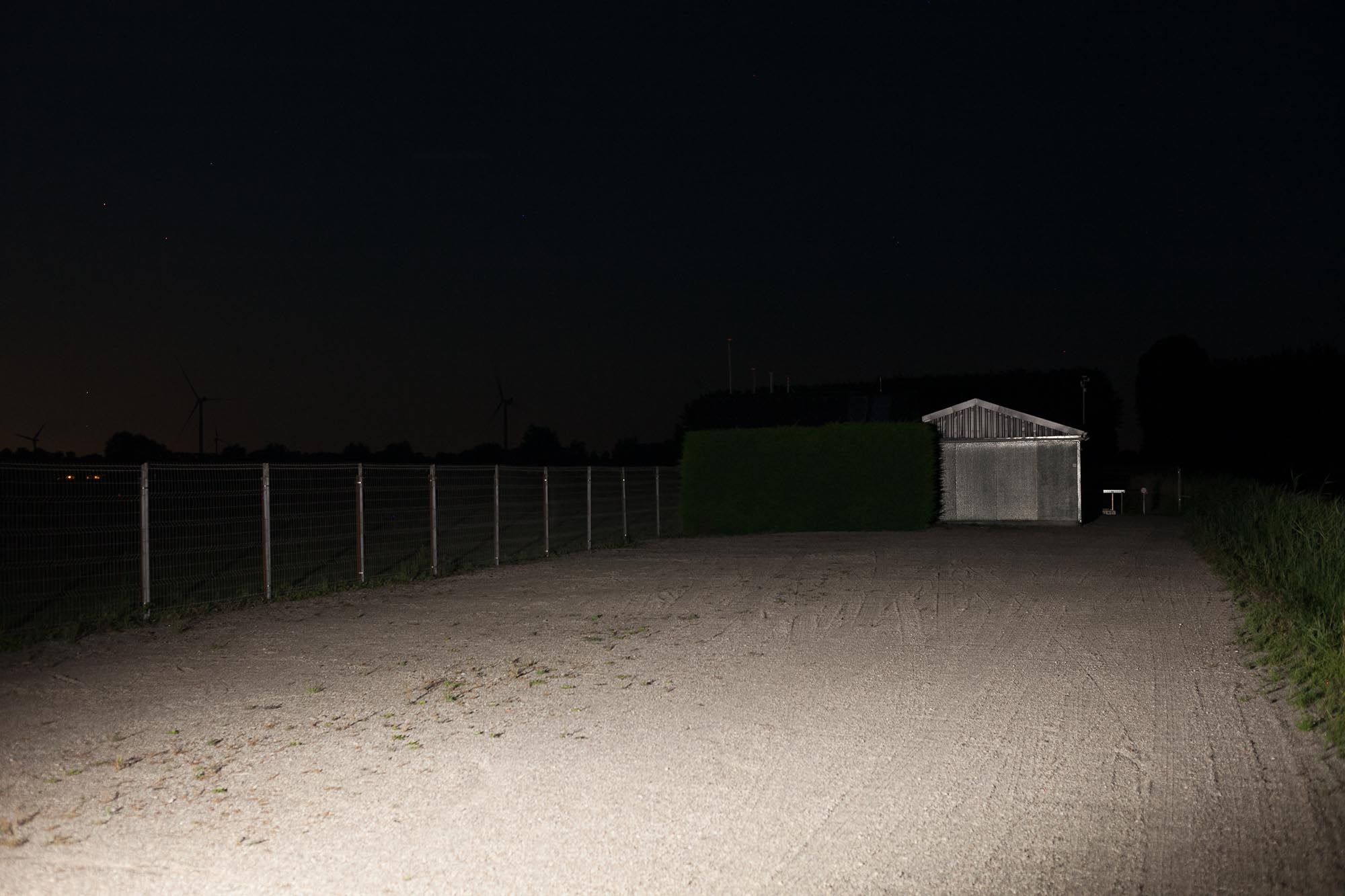
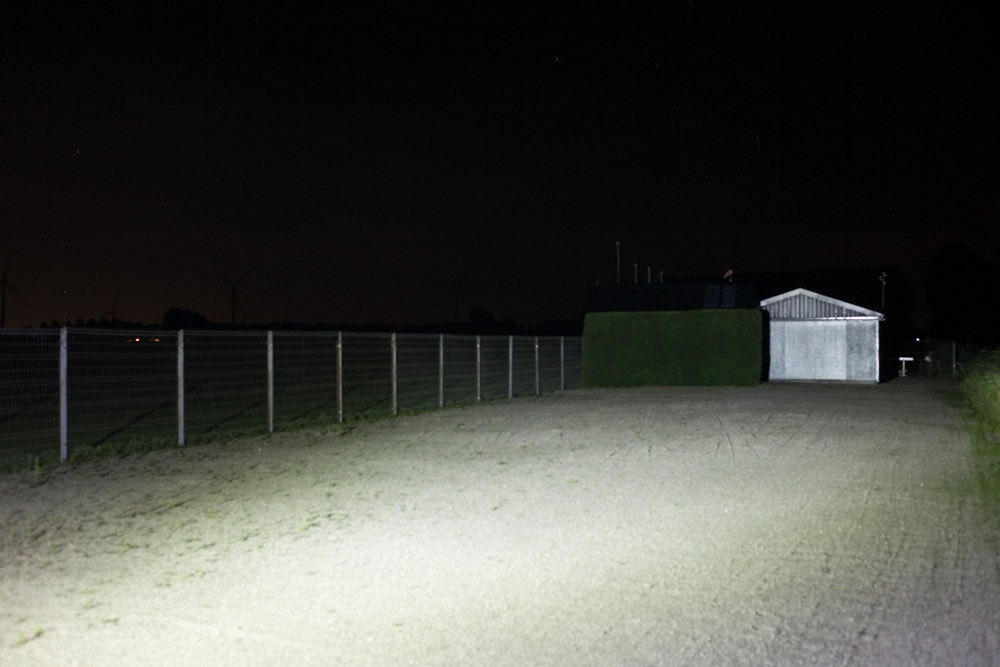
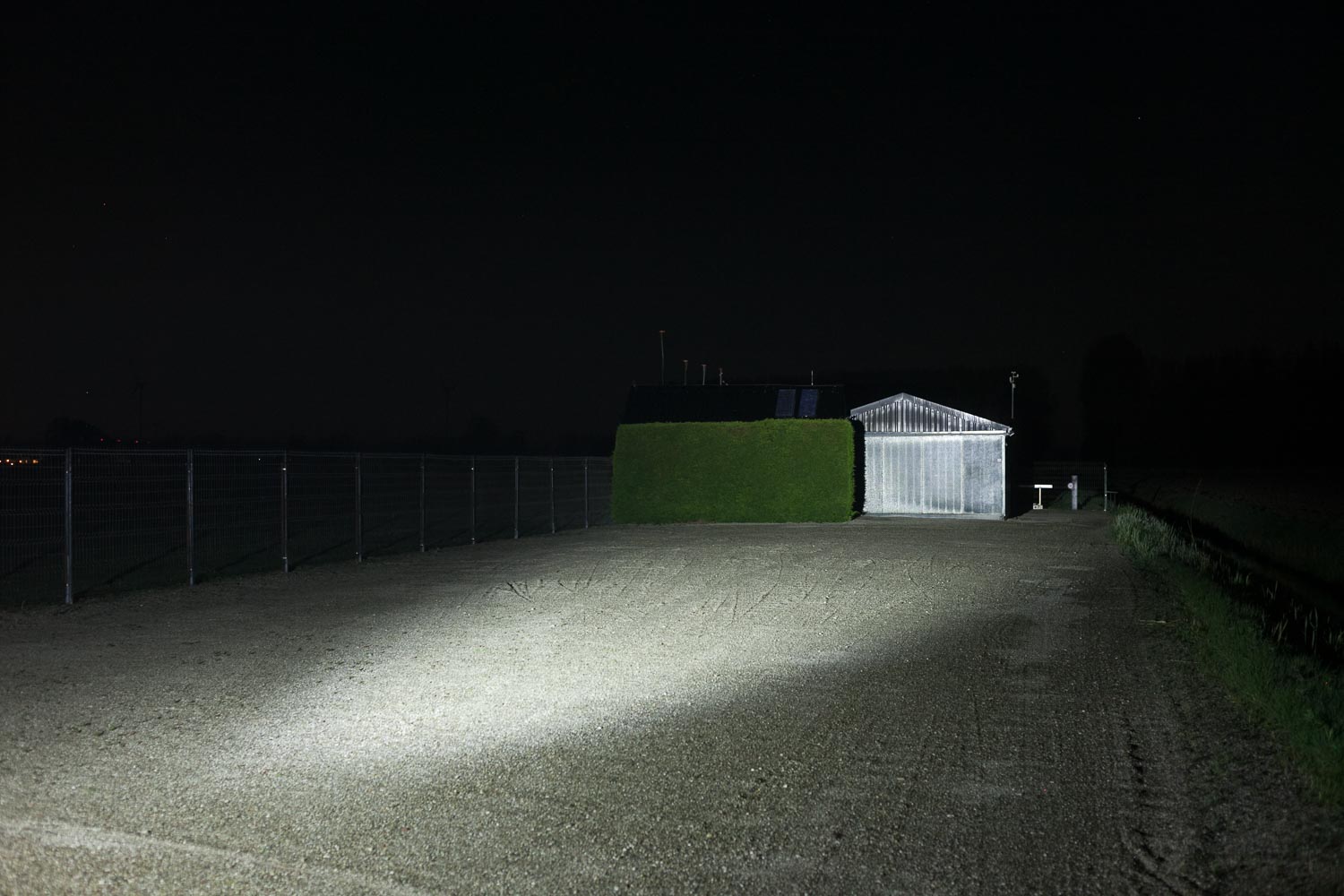
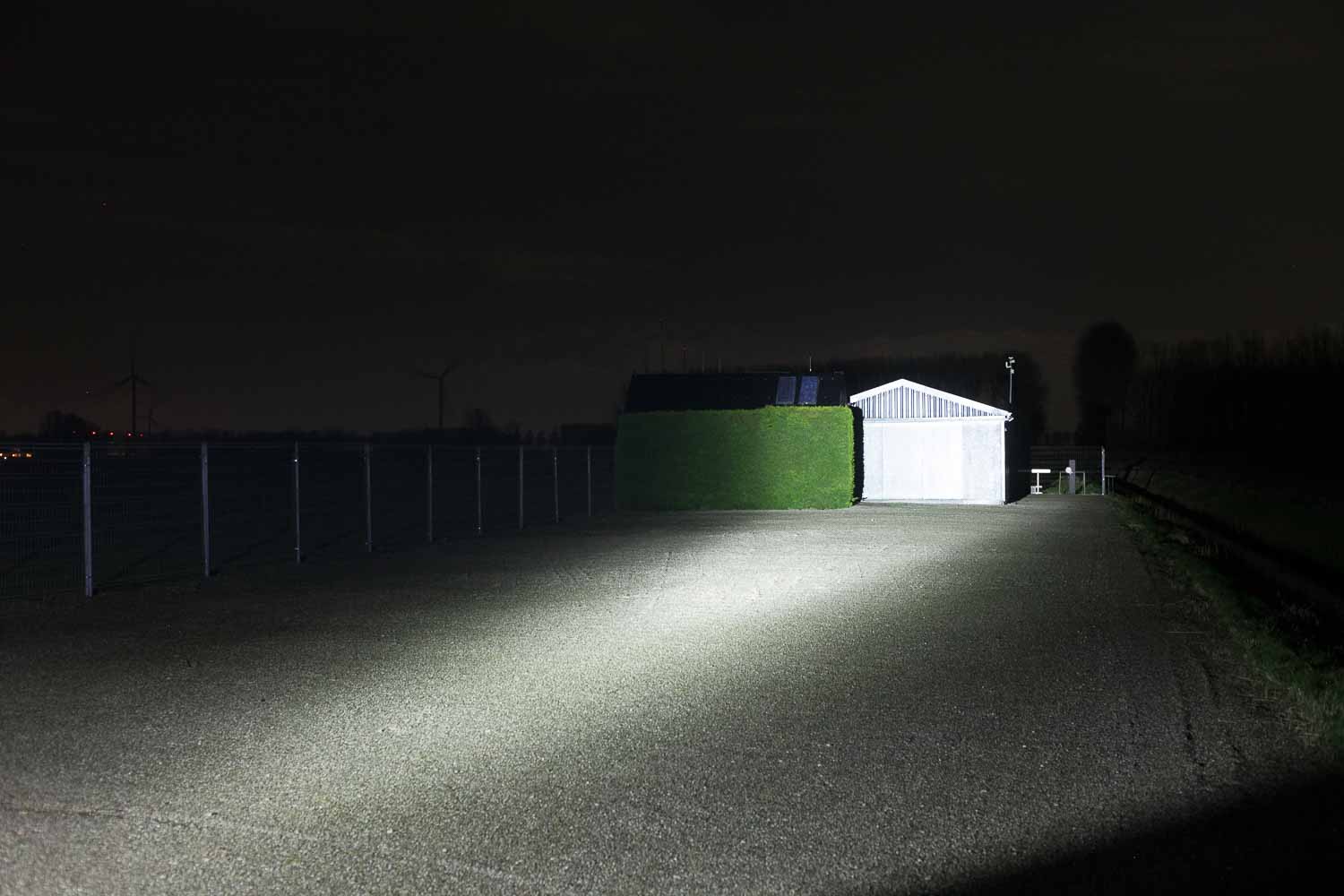
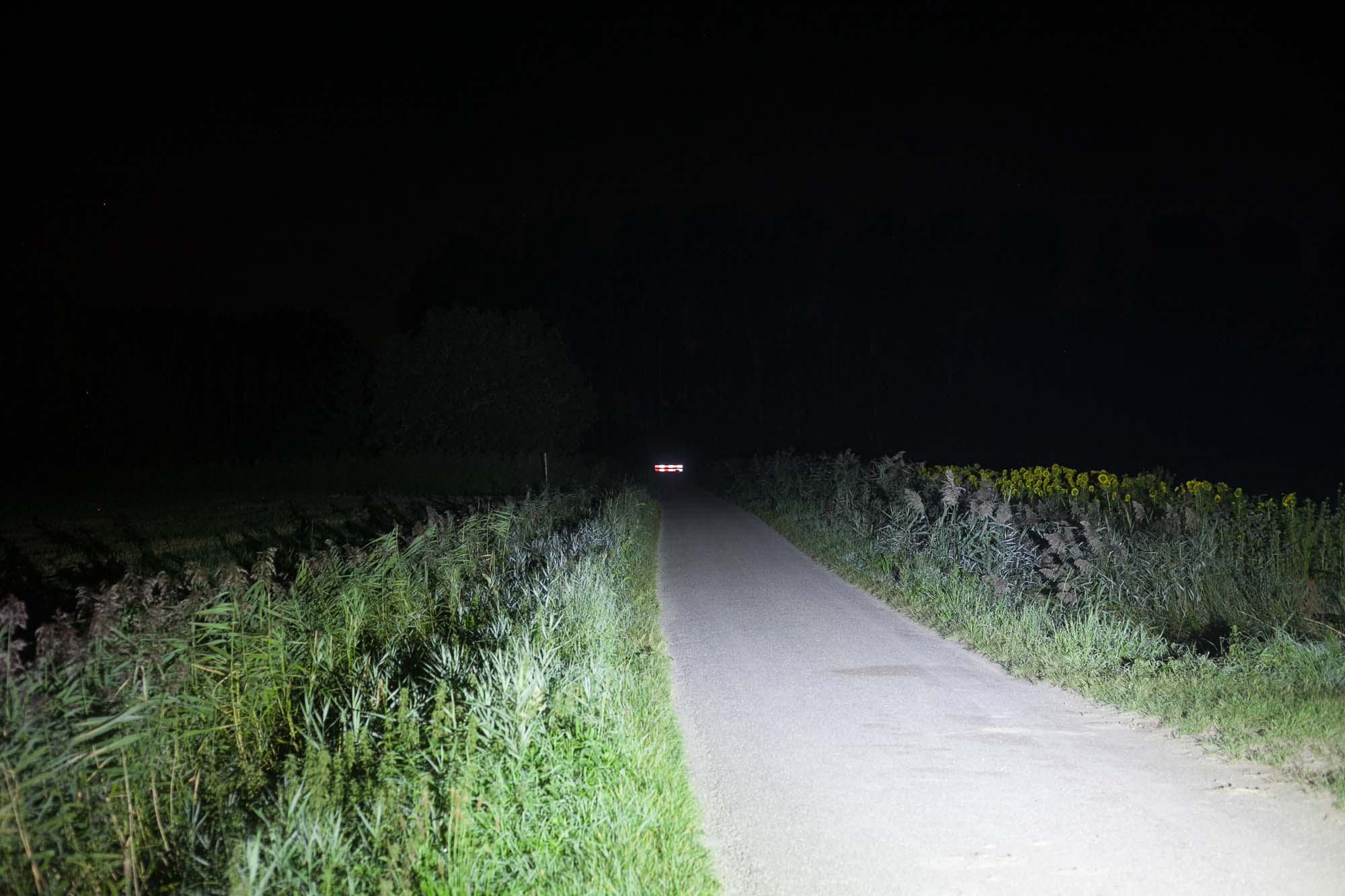

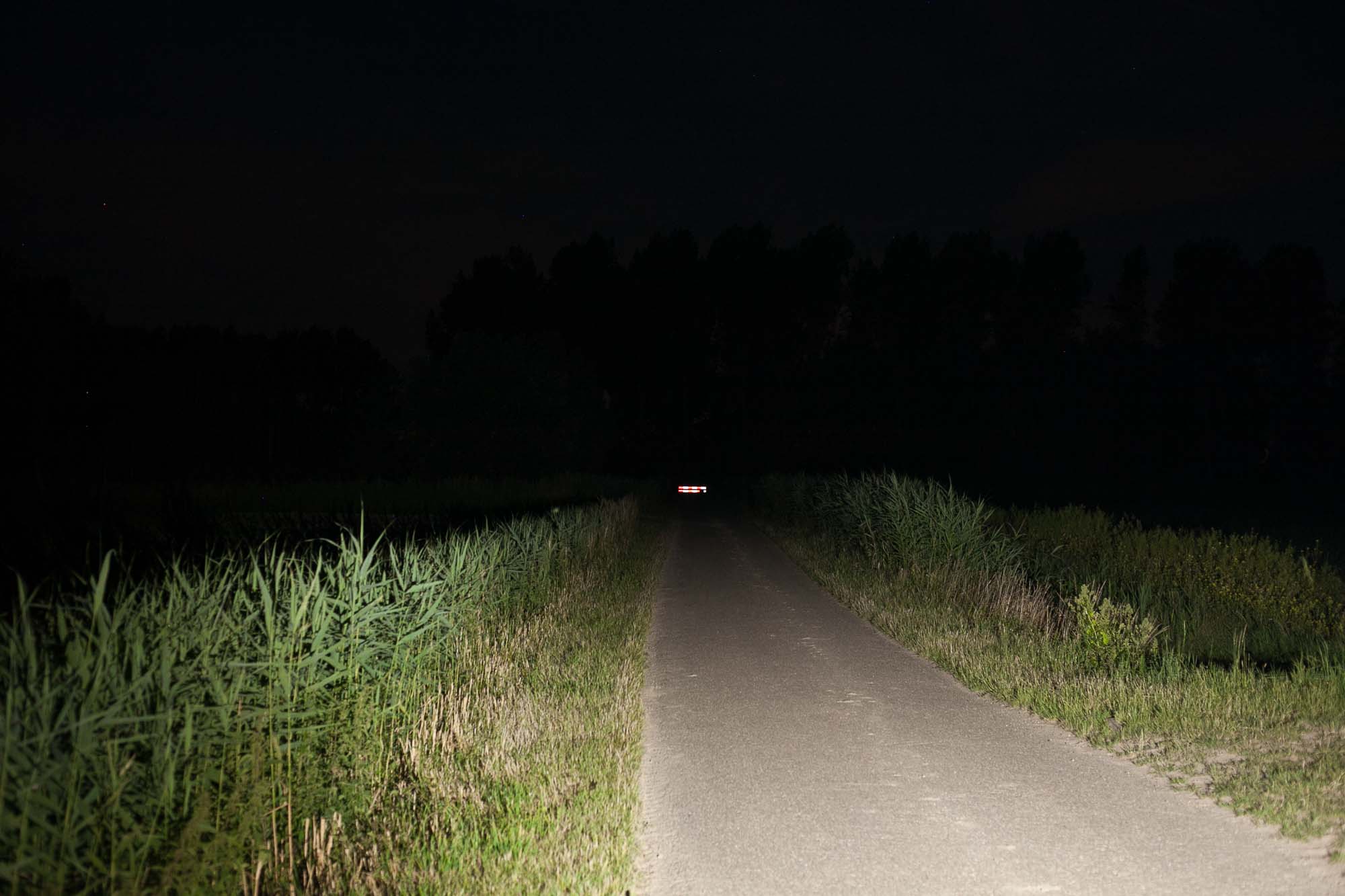
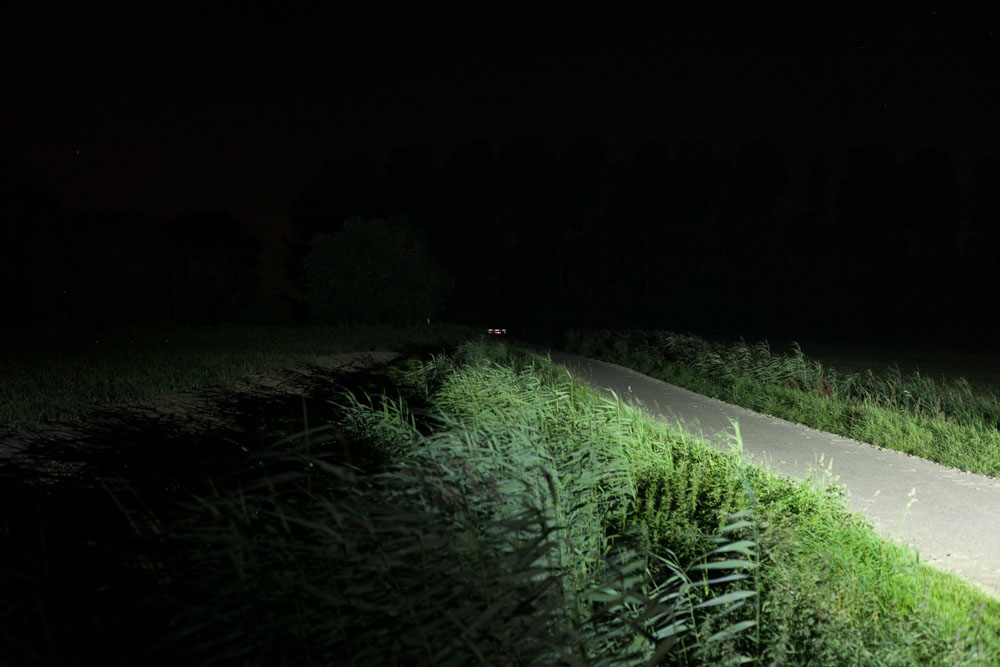
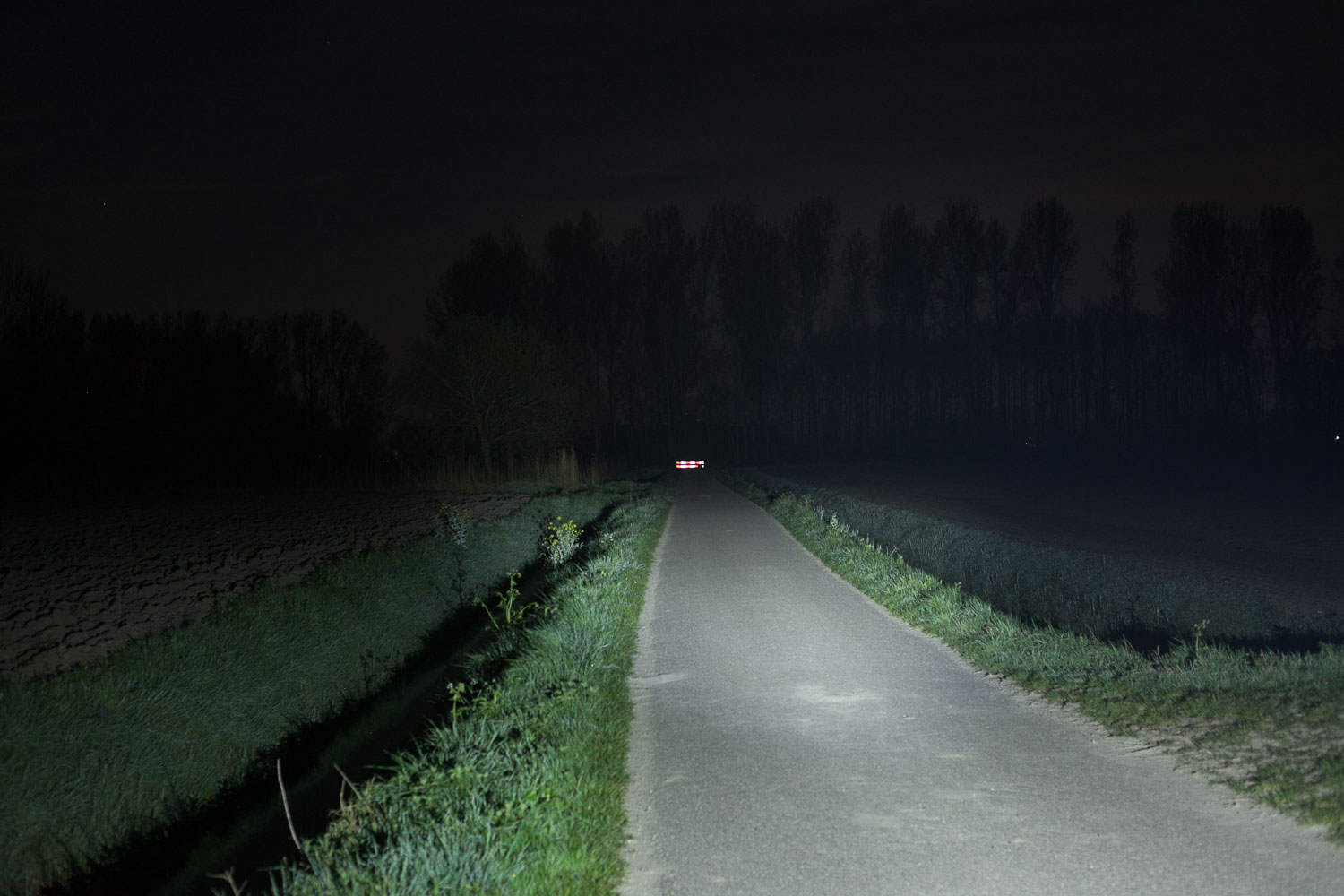
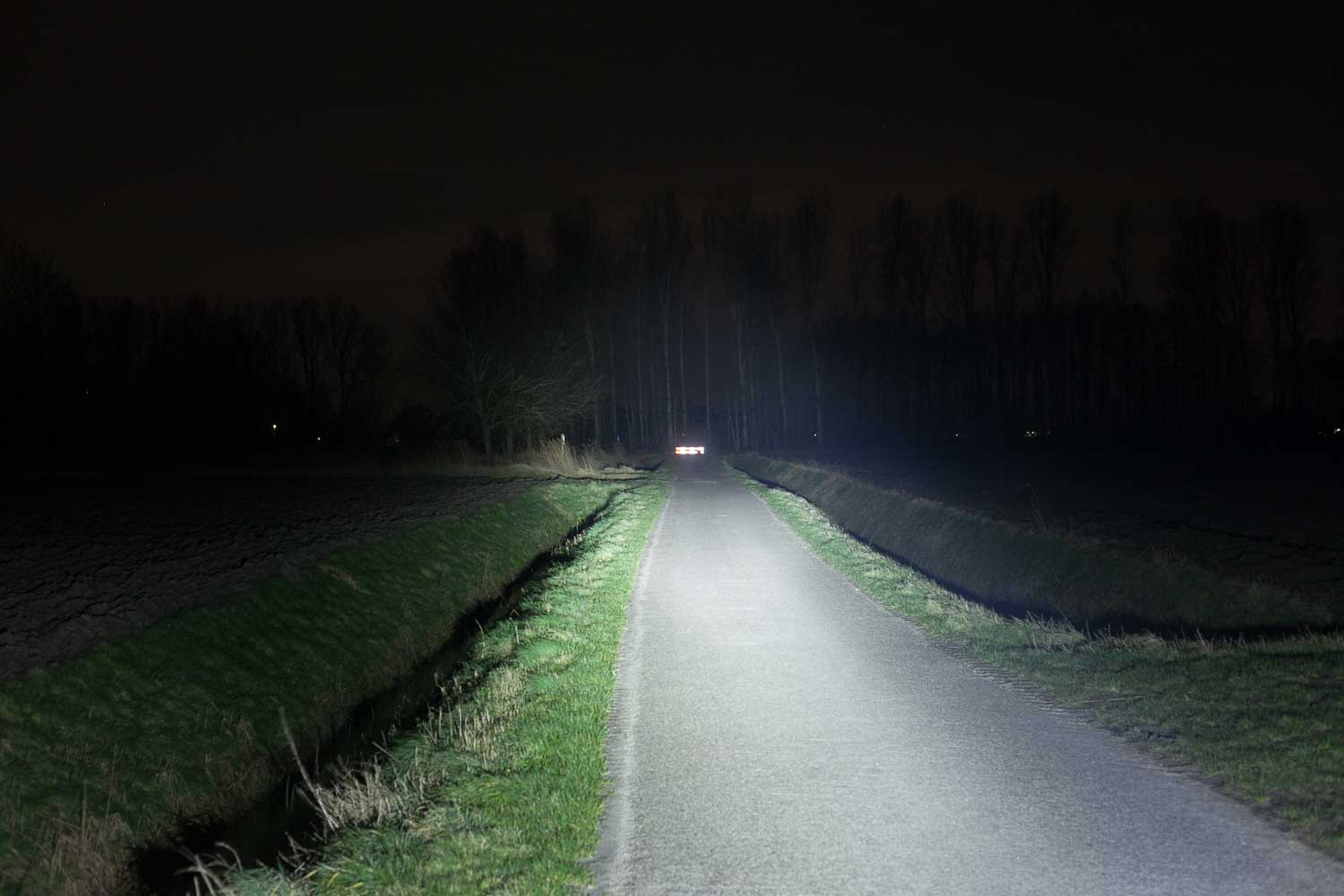

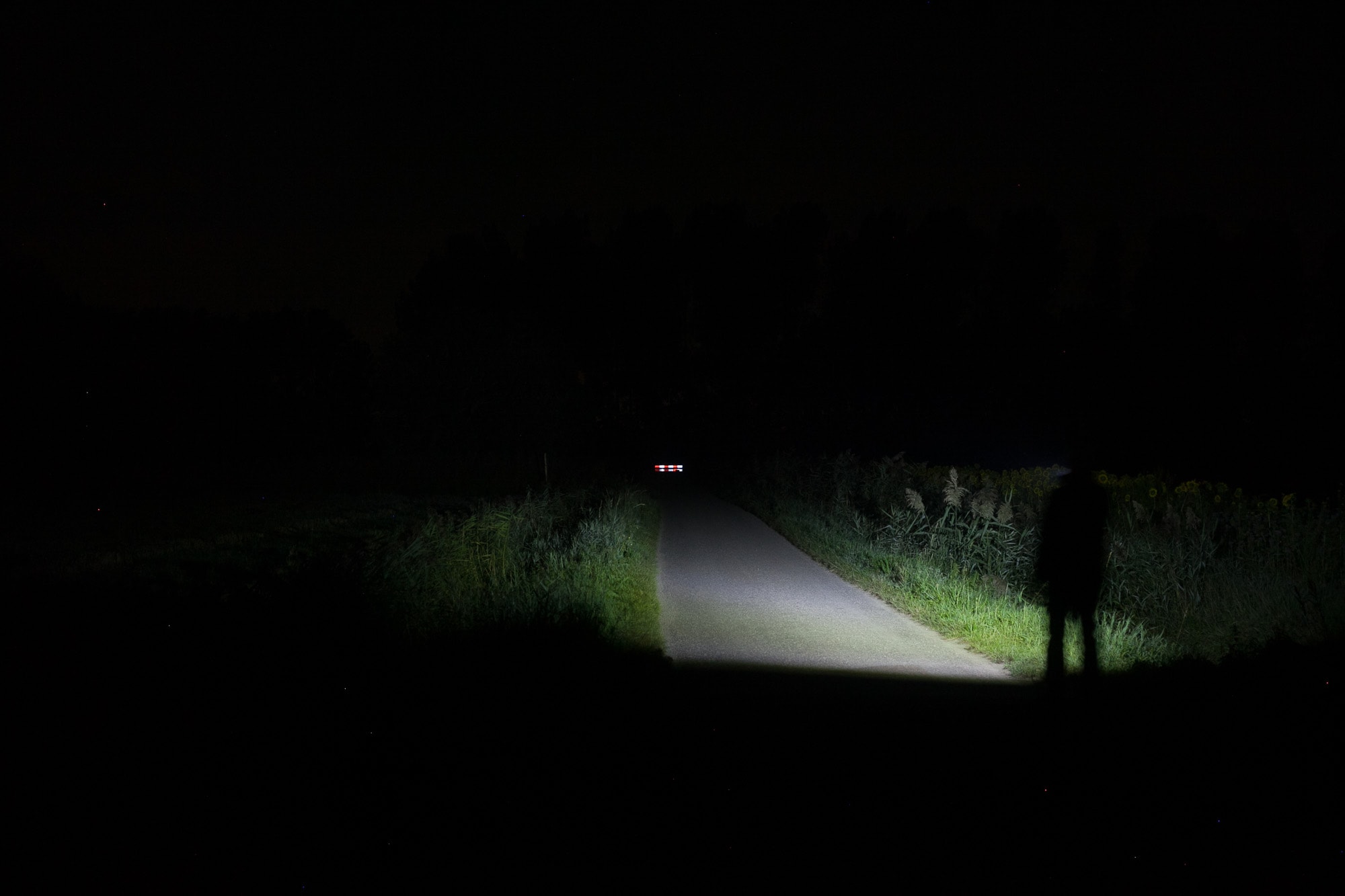
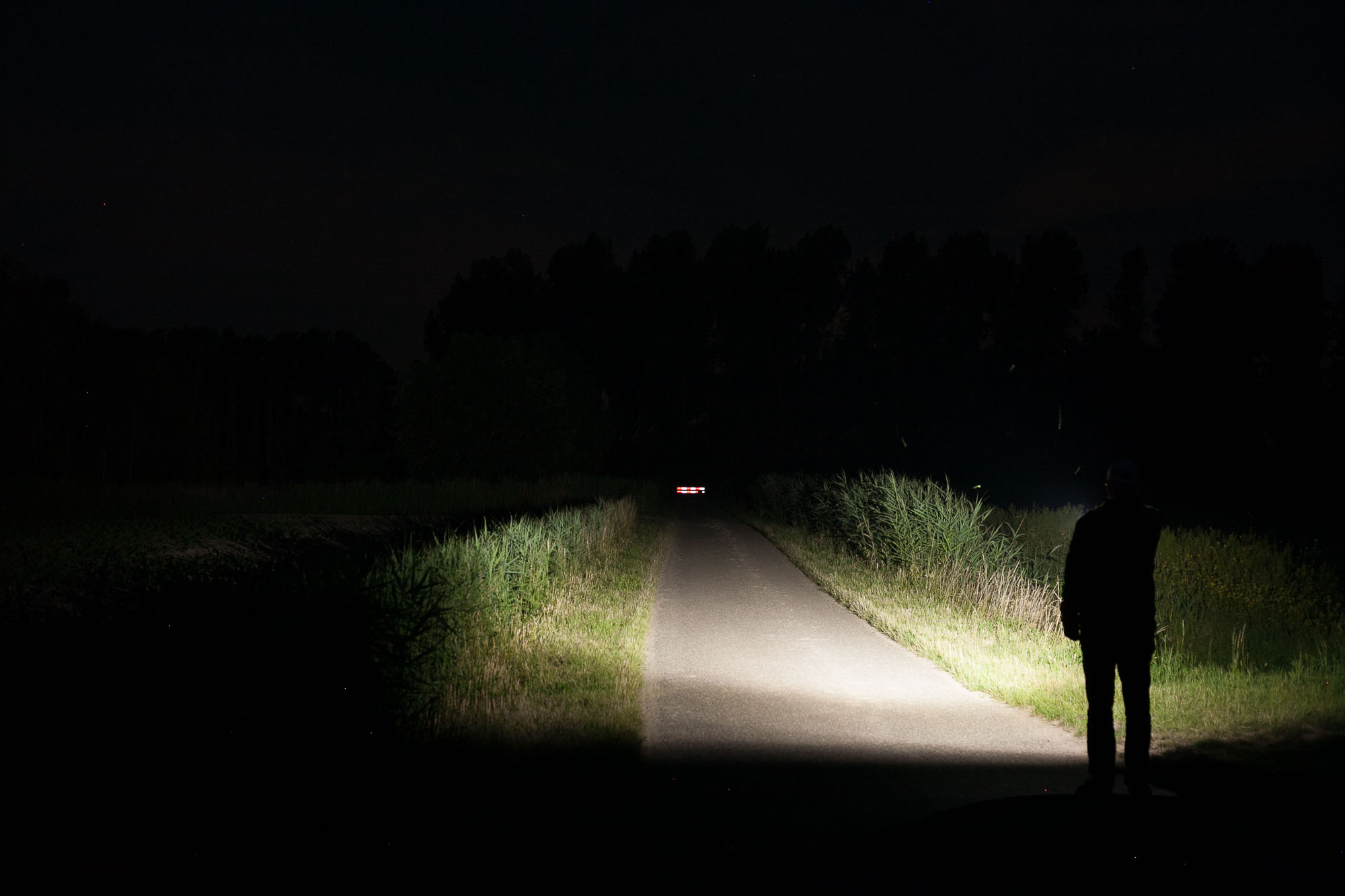
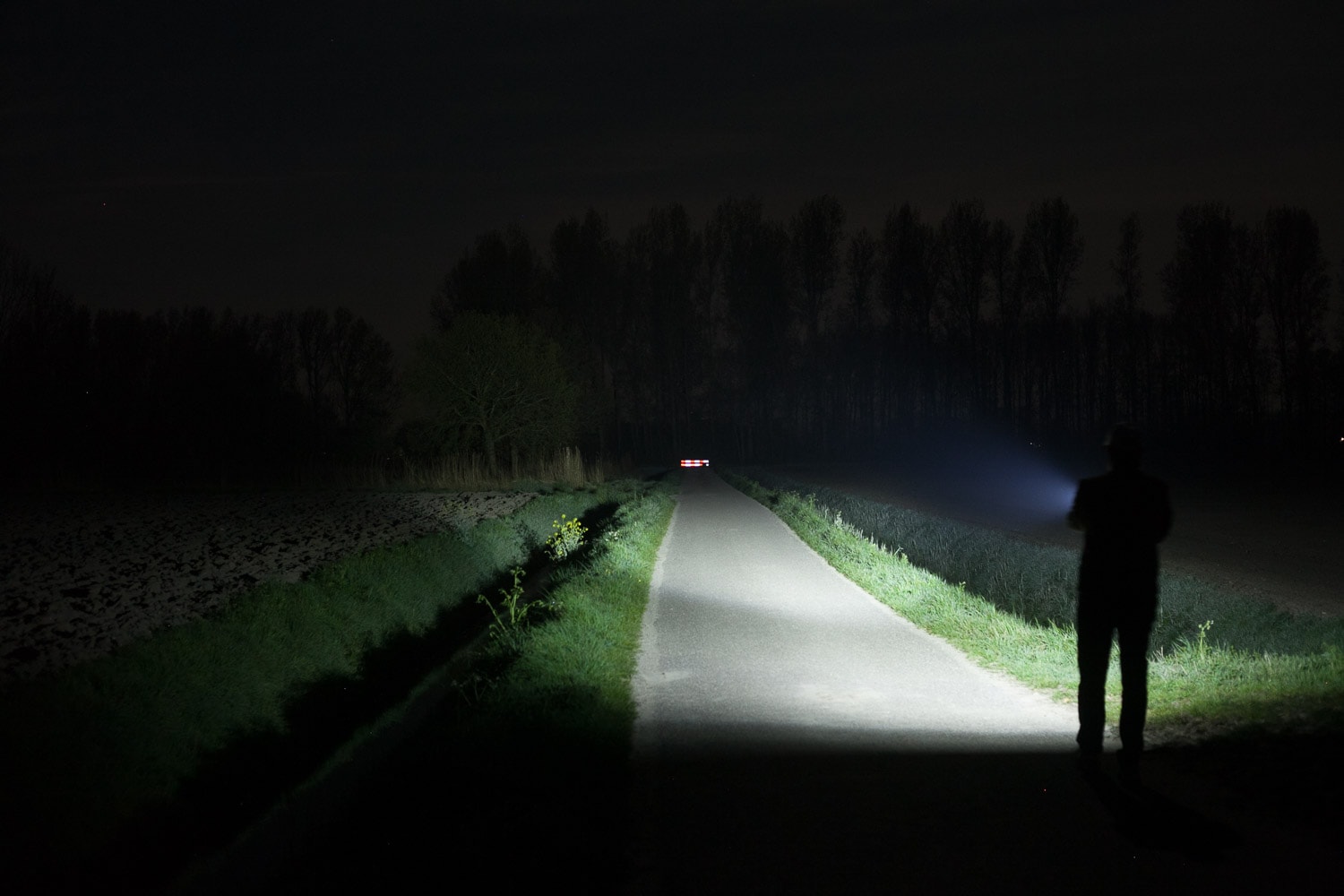
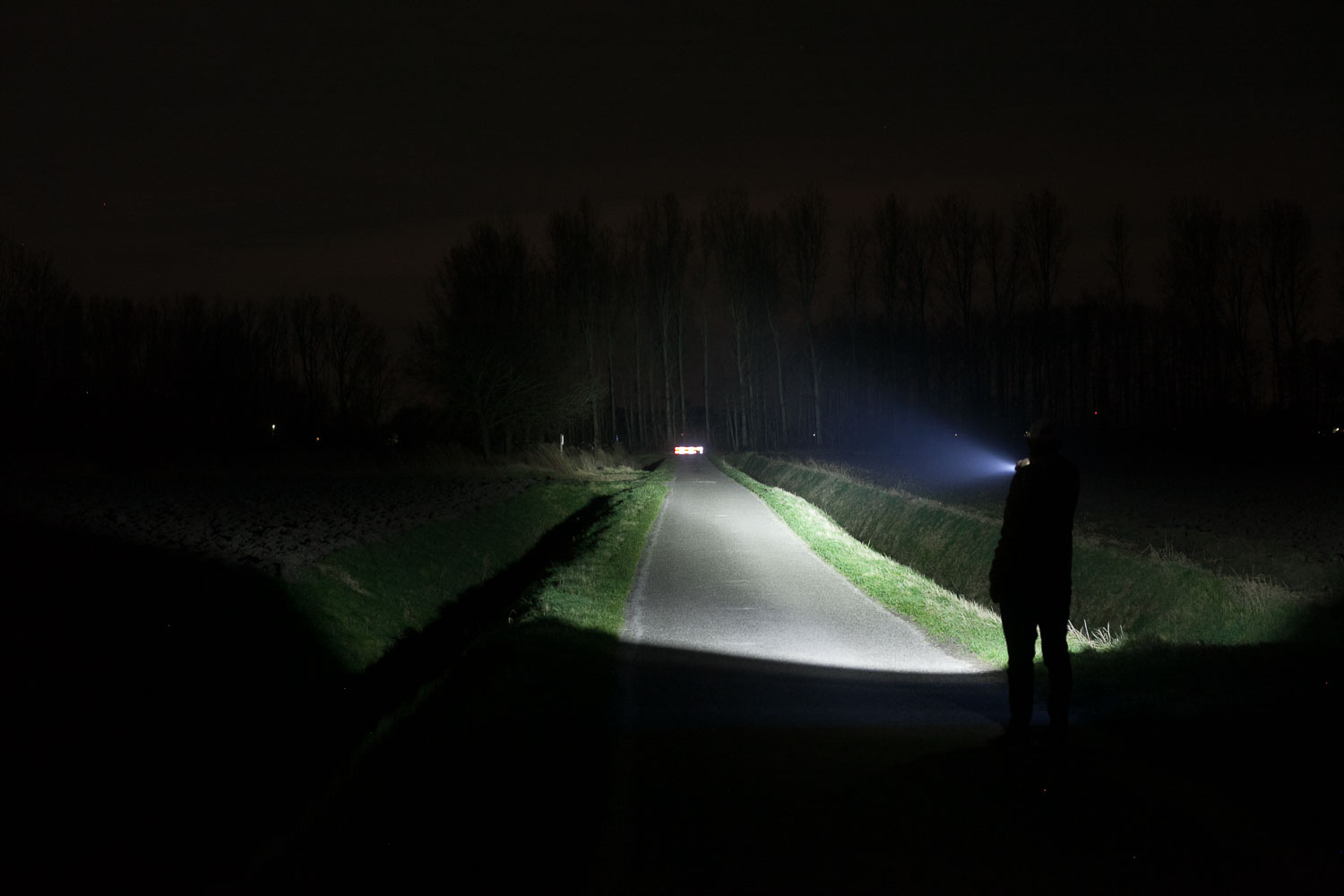
Disclaimer: This flashlight was sent to me for review at no cost by NEXTORCH. I have not been paid to review, nor have I been holding back on problems or defects.
Final Verdict
Pros
- Brighter than specified
- Package included 21700 battery, and USB cable, so you don’t need to buy a separate charger
- Great for tactical use, as it always starts in High mode (3000+ lumens)
Cons
- No USB-C to USB-C charging
- Beam is very cold, and color shifts at close distance
- No regulated output
- Low mode is not really low (but not so important for Tactical use)
- Discharges to 2.5V and charges to 4.24V
Explanation on star ratings:
1: Avoid: my phone flashlight would be a better choice – 2: Poor: significant defect or issues; almost unusable – 3: Average: some defects or issues; but still usable 4: Good: recommended (minor issues) – 5: Great: highly recommended
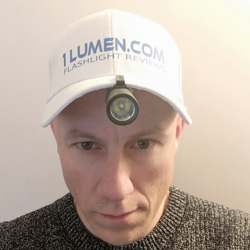
3.5 stars: ★★★⋆
While our star rating provides a reliable indicator, we encourage you to read the full review to make an informed decision based on your own needs and preferences.
At first I thought it was marketed as being an EDC flashlight, but nowhere on their sales page do they mention EDC. In fact, NEXTORCH mentions several activities in their marketing material, and EDC is not one of them.
The forward clicky switch, a UI that cycles from High to Low, always starting in High mode, a strobe mode, and large size, make it align more with the Tactical Flashlight category than any other.
If this is what you like, the E52C could still be a good option.
Buy your NEXTORCH E52C here:
Get 10% off at NEXTORCH using our exclusive discount code: 1lumen10
1lumen selects and reviews products personally. We may earn affiliate commissions through our links, which help support our testing.